New mines, old problems
As the search for energy transition metals spread across Southeast Asia, the experience of local communities in the Philippines, a nickel mining powerhouse, could foretell risks to environment, health and livelihoods.
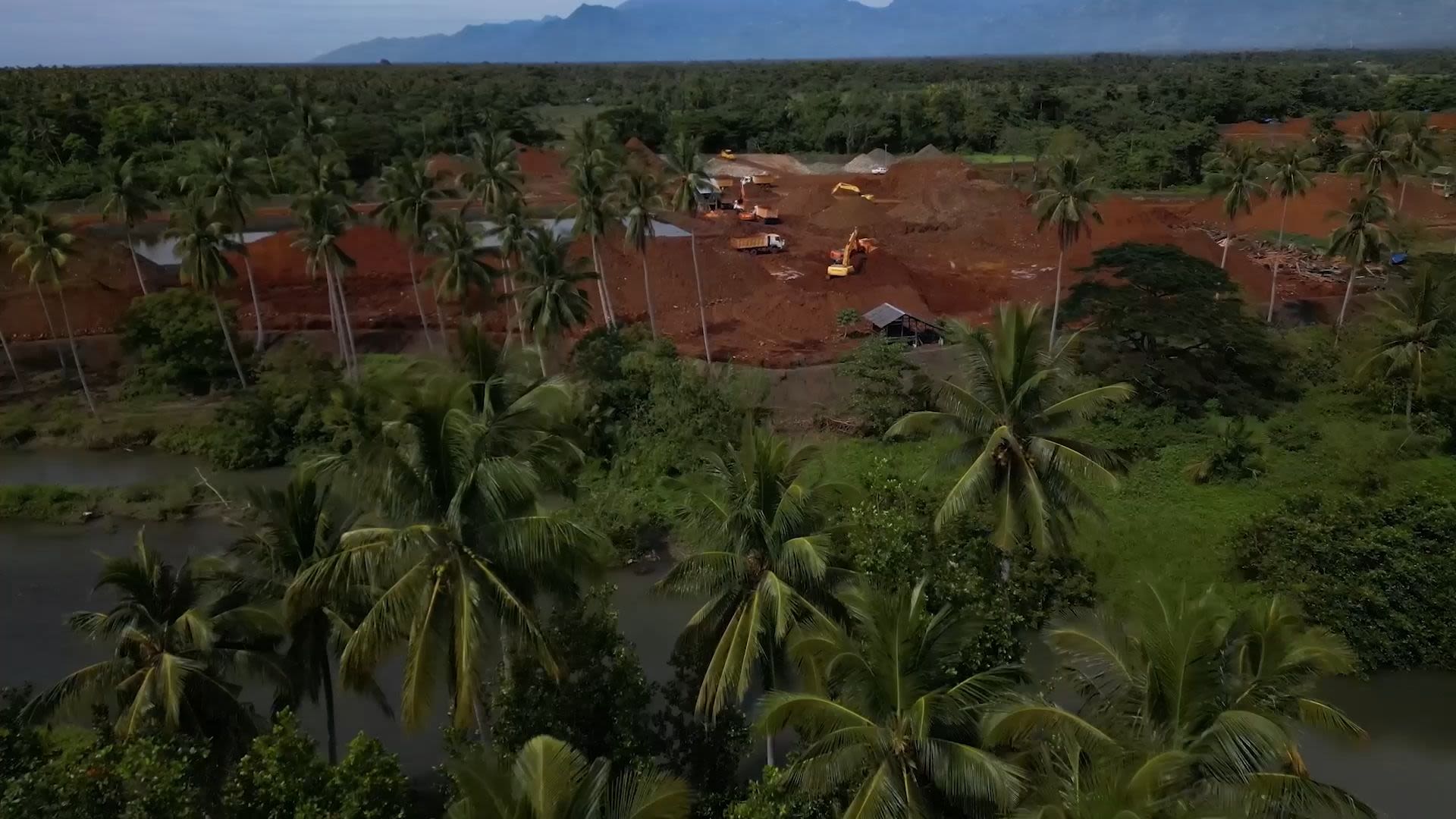
Tensions are brewing in the Philippines as mining firms look for new plots, sometimes on ancestral land, to mine nickel – a hot commodity for manufacturing climate gadgets.
The troubles Philippine communities are facing could foreshadow similar issues in Southeast Asia, as the search for minerals essential for the clean energy transition spills into the region, along with the societal and environmental issues. Are equitable benefits possible?
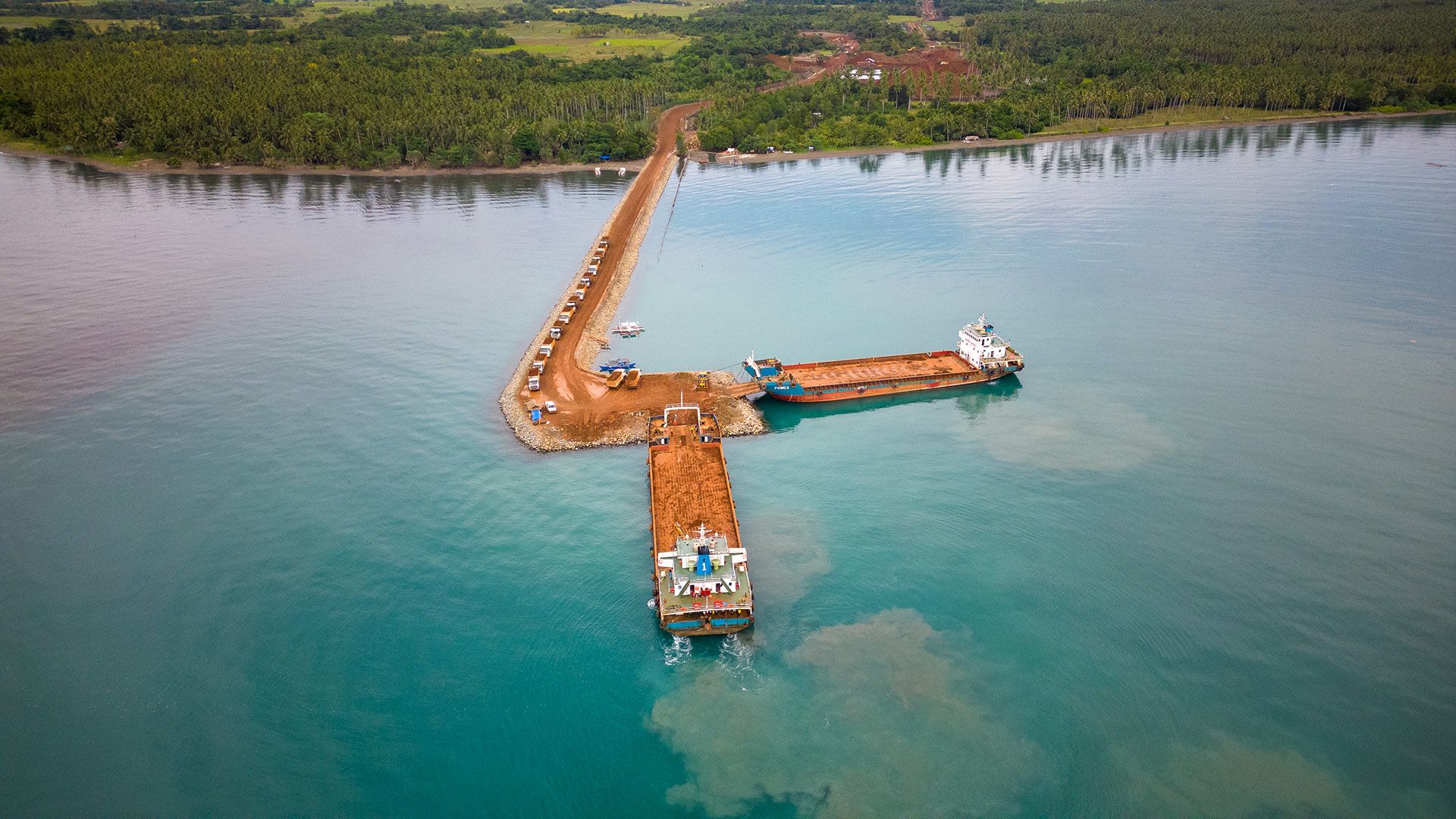
Nickel ore is loaded onto two cargo ships docked off the coast of Maasin, a town in Palawan province, Philippines. Leaked residue of the metal can be seen on the surface of the sea. The export destination is Guangdong Century Tsingshan Nickel Industry Co. in China.
Nickel ore is loaded onto two cargo ships docked off the coast of Maasin, a town in Palawan province, Philippines. Leaked residue of the metal can be seen on the surface of the sea. The export destination is Guangdong Century Tsingshan Nickel Industry Co. in China.
At a pier located in the southern part of Palawan province, two cargo ships are waiting. In a few hours, they will be loaded with piles of nickel ore for export. The minerals are from a nearby mine, newly-developed, upon what Indigenous peoples of Palawan, Philippines once considered a tropical sanctuary. Seen from above, its patchwork of rice fields and coconut trees have given way to a vast expanse of red laterite soil.
Farming and catching crabs on the seashore – activities that support the livelihoods of the Pala’wan tribe residing in this barangay or town called Maasin in the municipality of Brooke’s Point – have been difficult. Local communities say the mining operations have contaminated nearby water systems. This could be due to pollution from mining waste, such as residue sludge.
If they cannot pay us for all the years of lost earnings they should at least provide us with an alternative livelihood.
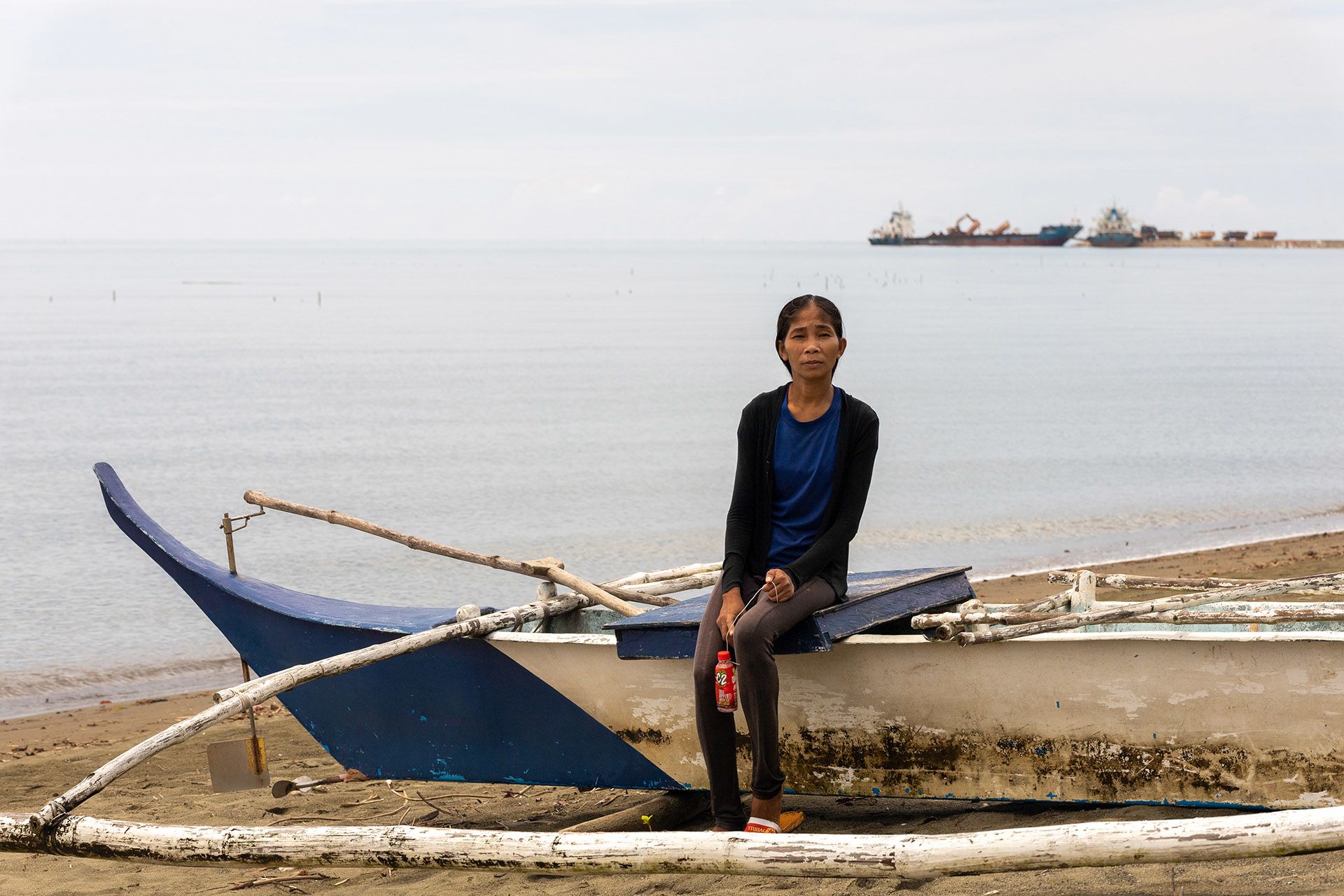
Tambiling at the seashore of Barangay Maasin in Brooke’s Point, Palawan where she harvests crabs as her livelihood. Behind her are cargo ships loading nickel from the Ipilan Nickel Corporation mine.
Tambiling at the seashore of Barangay Maasin in Brooke’s Point, Palawan where she harvests crabs as her livelihood. Behind her are cargo ships loading nickel from the Ipilan Nickel Corporation mine.
Alayma Tambiling, a single mother of six children, who has lived in Maasin for close to 40 years, says the ongoing mining activities have been “painful to watch”. Ipilan Nickel Corporation (INC), a local company that runs the mine and a subsidiary of listed firm Global Ferronickel, has offered her US$2,000 as compensation for the use of an area in the town where she collects crabs, so that ships can be docked and the nickel ore loaded onto them, but Tambiling has rejected the money.
Tambiling told INC the amount was not enough in exchange for the loss of her livelihood. INC replied that she should “budget the money wisely”, she recalled.
“If they cannot pay us for all the years of lost earnings they should at least provide us with an alternative livelihood,” she said.
“But even if they do, our health will suffer from all the pollution from the mine. They should be compensating us for that too,” she added.
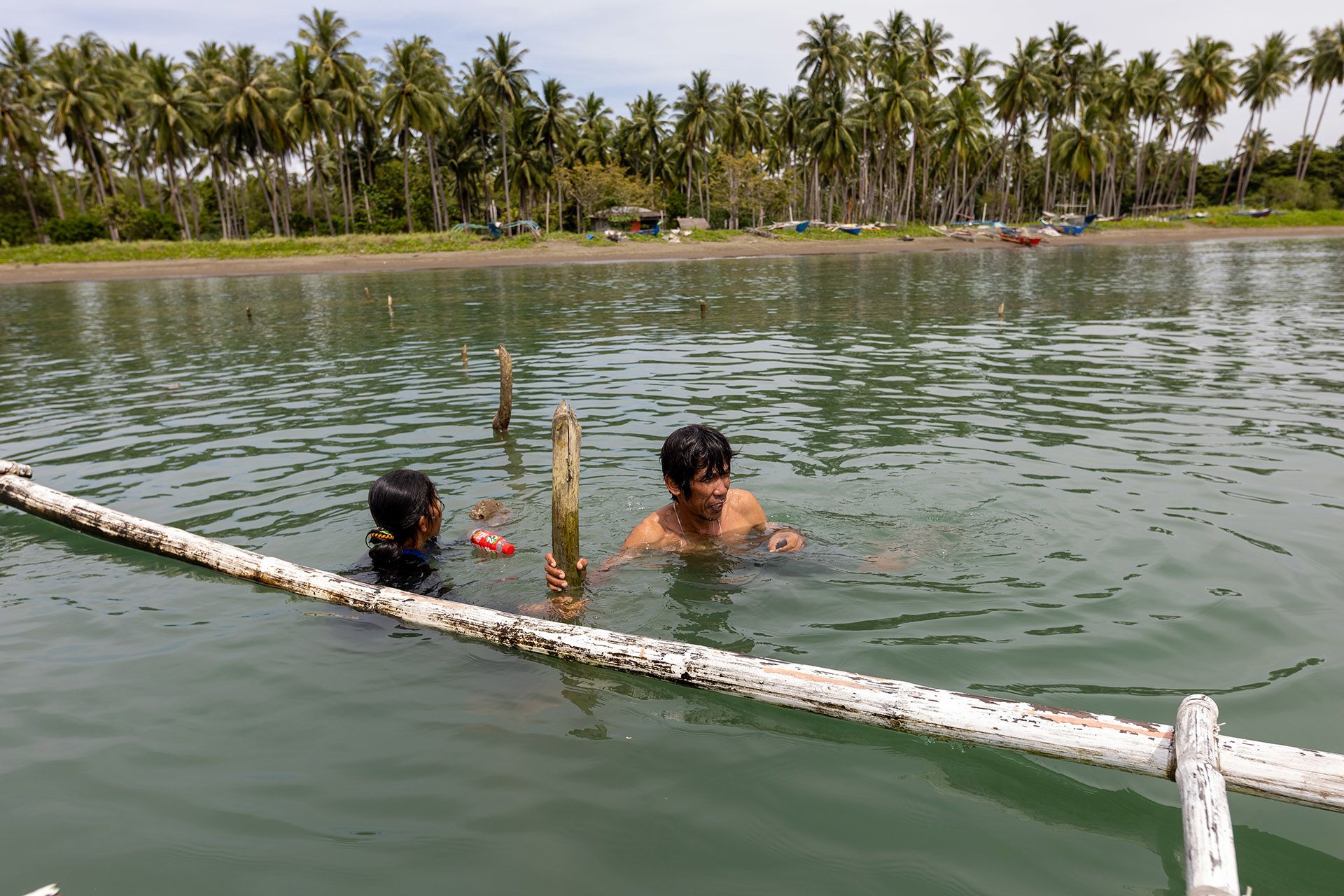
Alayma Tambiling dives in the water with her brother to harvest crabs.
Alayma Tambiling dives in the water with her brother to harvest crabs.
The Philippines has the world’s fifth-largest reserve of nickel, one of the mineral commodities in hot demand to manufacture clean energy hardware, like wind turbines – the power output from which could triple over the next decade, and electric vehicles – the number of which could rise ten-fold. Countries and corporations worldwide are laying claim to these minerals, which also include lithium and cobalt, with increasing zeal, as demand outstrips supply.
These energy transition minerals and gadgets are seen as essential for limiting global warming to well below 2 degrees Celsius – a target the entire world pledged years ago in the Paris Agreement.
Projections for key energy transition mineral demand. SDS refers to the IEA's Sustainable Development Scenario, which meets Paris Agreement Targets. Data: International Energy Agency.
The demand for nickel could outstrip supplies by 2024, and go into shortages by 2026, according to Norwegian analyst Rystad Energy. The lithium and cobalt crunch, meanwhile, could happen as soon as 2025, says the International Energy Agency (IEA).
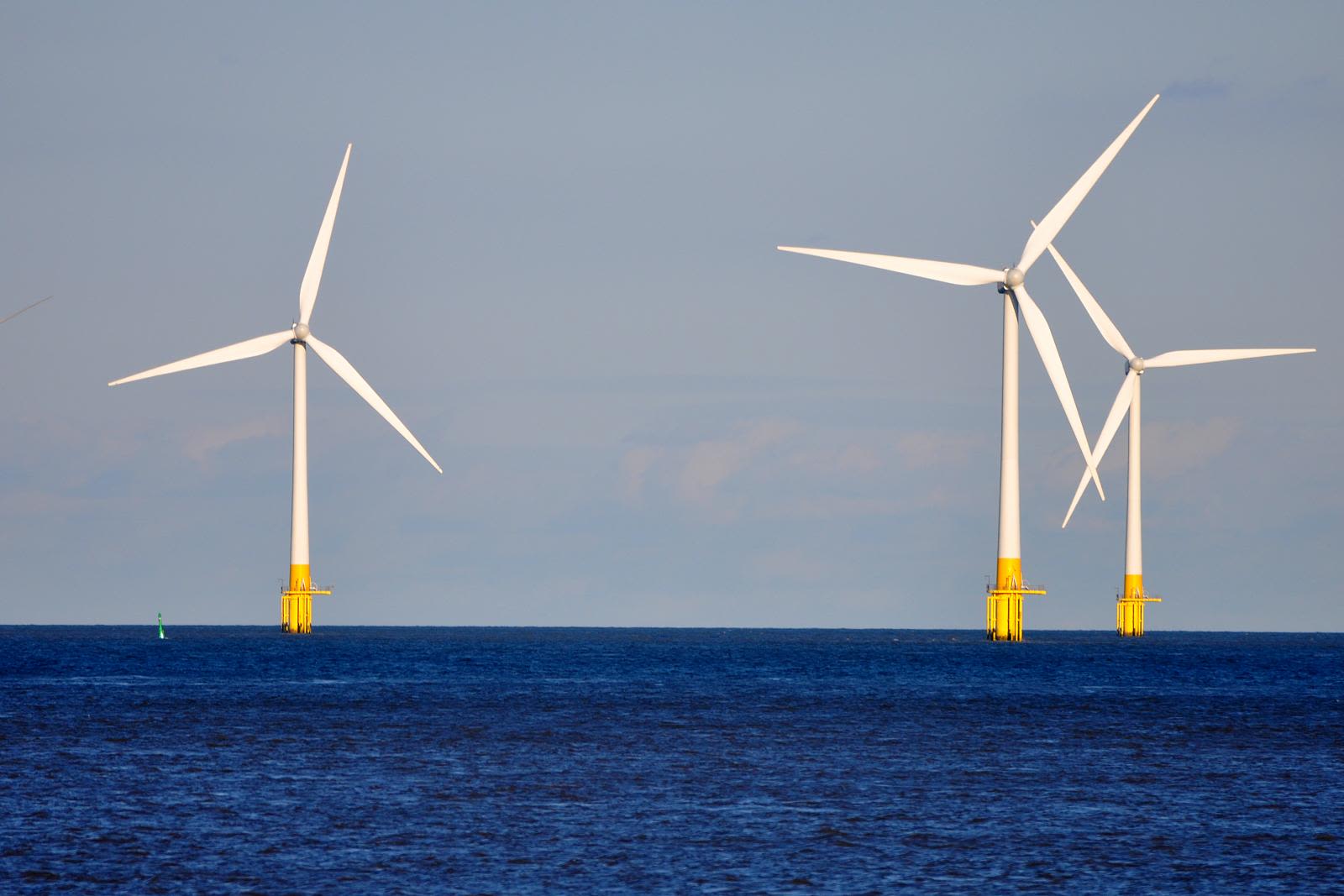
Wind turbines in the North Sea. Image: Flickr/ Martin Pettitt.
Wind turbines in the North Sea. Image: Flickr/ Martin Pettitt.
How are “energy transition minerals” used?
Nickel is a major component of lithium-ion batteries found in electric cars. The metal allows electricity to flow out of batteries. The same trait makes nickel suitable in producing clean hydrogen. Nickel can also toughen up stainless steel, making the material useful for ball bearings in giant wind turbines and reactor vessels of nuclear plants.
Charged lithium particles are what flows in powerful lithium-ion batteries, used to power electric cars and store energy from solar panels.
Cobalt makes batteries safe by preventing overheating and fires. They are also needed in producing strong magnets for wind turbines.
Other minerals used in the energy transition include rare earths, as well as metals that go into wires and weight-bearing structures, like copper and aluminium. These materials aren’t rare, but their rise in demand strains supply chains.
For residents living near the mineral deposits, the world’s prized climate solution means deforestation, water shortage, and toxic chemical release – as Eco-Business observed on a reporting expedition in Maasin.
The mining project of INC straddles a pristine mountainous region, known as the Mount Mantalingahan-Pulot Range. For the Pala’wan tribe, a place once considered sacred has been lost.
The construction of the mine faced strong opposition when tenements were first built in 2018. Claiming that the project had no valid permits, the mayor of Brooke’s Point then had led the demolition of INC facilities. The firm pressed charges, resulting in her being suspended from her post.
Work around the mine site has continued. The mayor has also since been re-elected vice mayor.
Further south of Brooke’s Point in the municipality of Bataraza, locals in the town of Sumbiling fear an impending mine expansion in the Mount Bulanjao mountain range, to be carried out by the Rio Tuba Nickel Mining Corp (RTMC). Big firms such as the Berong Nickel Corporation which is found in Quezon and Citinickel Mines and Development Corporation, located in Narra, also operate in the area.
Opportunities now abound for Philippine nickel mining firms to fulfil orders from around the world, particularly China, its major buyer. Europe’s aversion to Russian nickel since its Ukraine invasion has brought the country more business.
But the persisting lack of accountability and transparency, along with corruption and neglect of environmental protection is casting a shadow on the industry.
The scale of nickel mining in the Philippines means that the tension between development, culture and environment is felt across many different communities, especially in the Southern islands where the mines are concentrated.
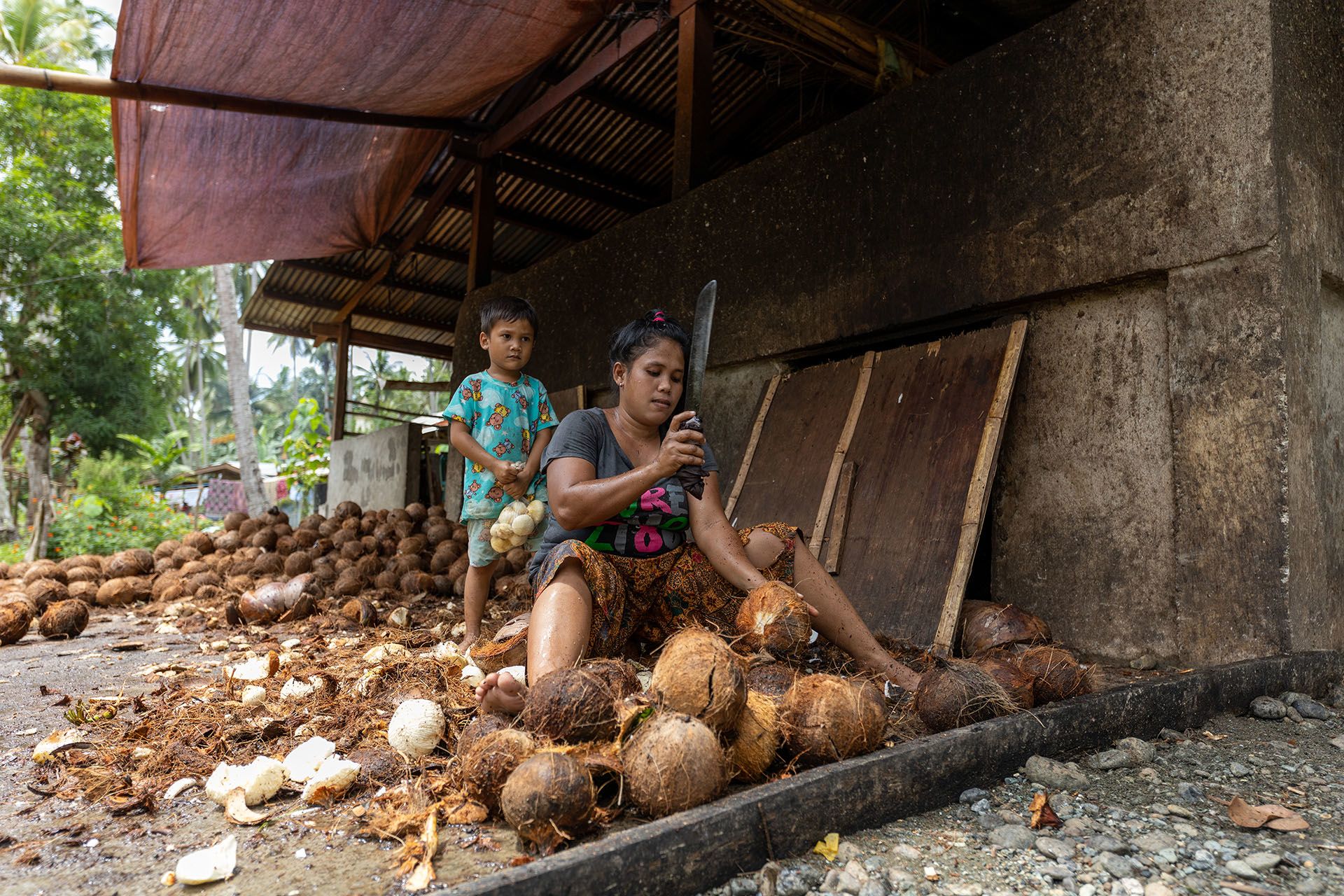
Residents of Barangay Maasin harvesting coconuts.
Residents of Barangay Maasin harvesting coconuts.
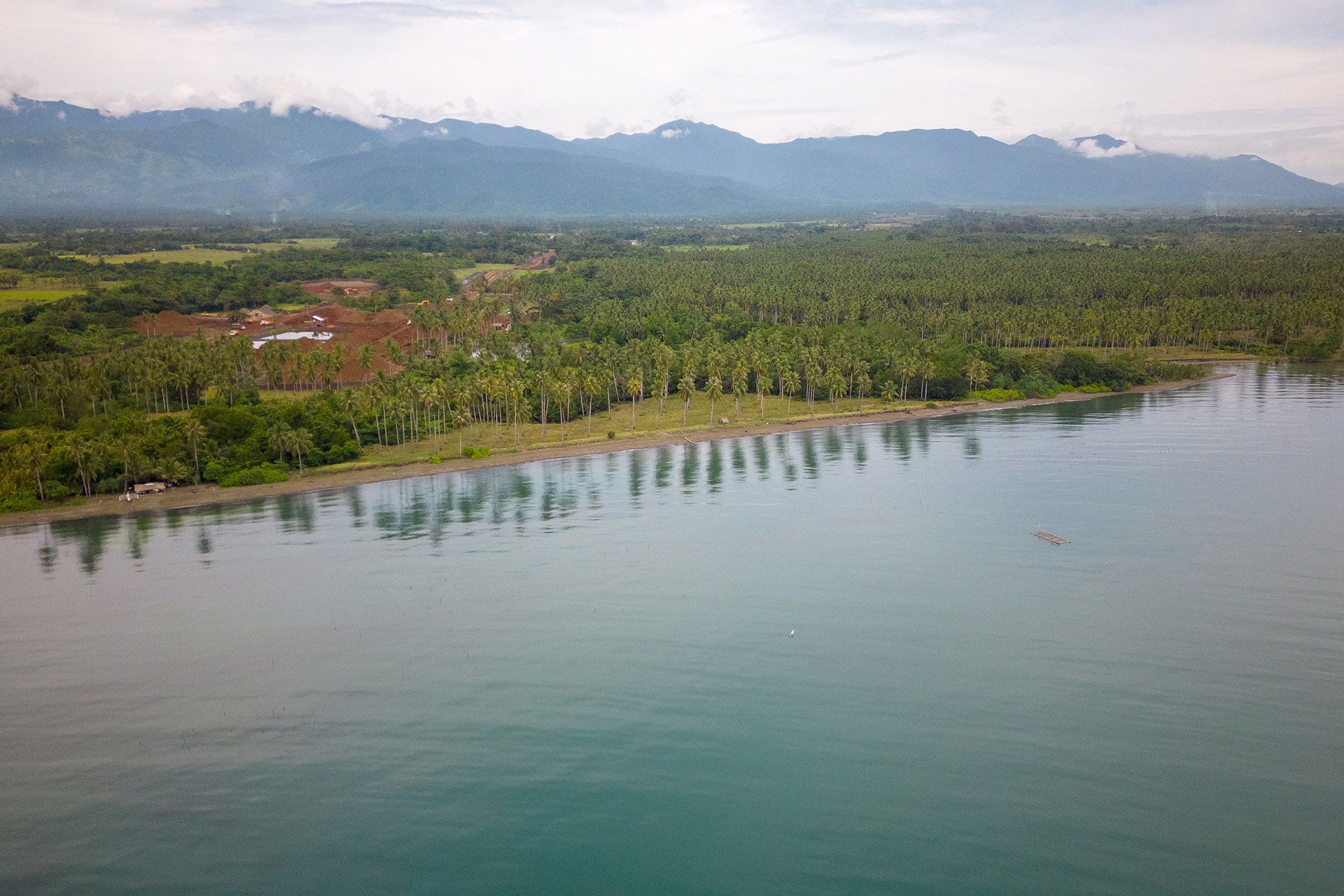
The Ipilan Nickel Corp mine site in Barangay Maasin, with red soil exposed, is next to a forest patch where Tambiling and her community live.
The Ipilan Nickel Corp mine site in Barangay Maasin, with red soil exposed, is next to a forest patch where Tambiling and her community live.
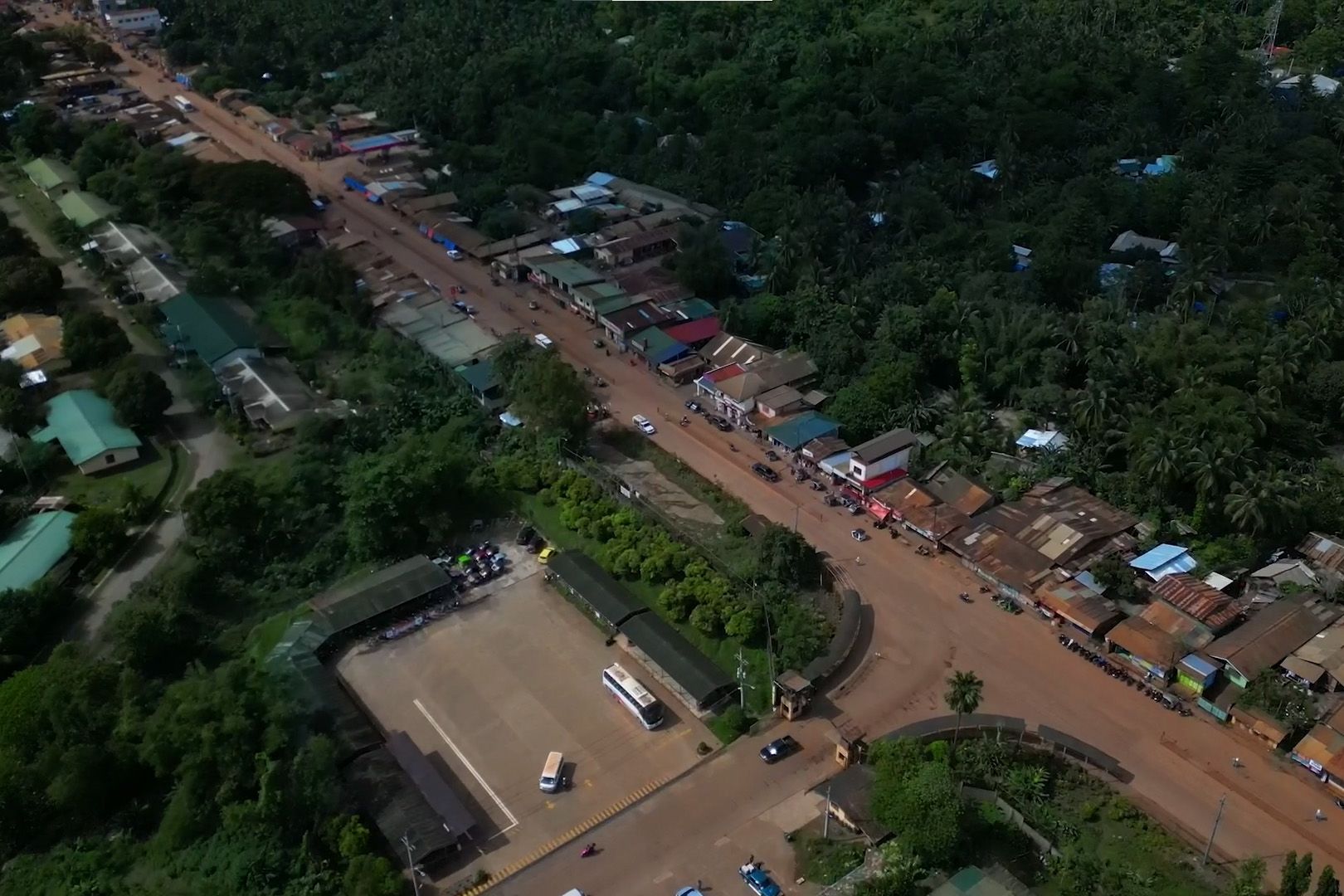
The main highway and roads surrounding the Rio Tuba Nickel Mining Corp (RTMC) in Bataraza are thick with red laterite soil from nickel ore. RTMC prides itself for building the roads, markets, schools and hospitals in the municipality.
The main highway and roads surrounding the Rio Tuba Nickel Mining Corp (RTMC) in Bataraza are thick with red laterite soil from nickel ore. RTMC prides itself for building the roads, markets, schools and hospitals in the municipality.
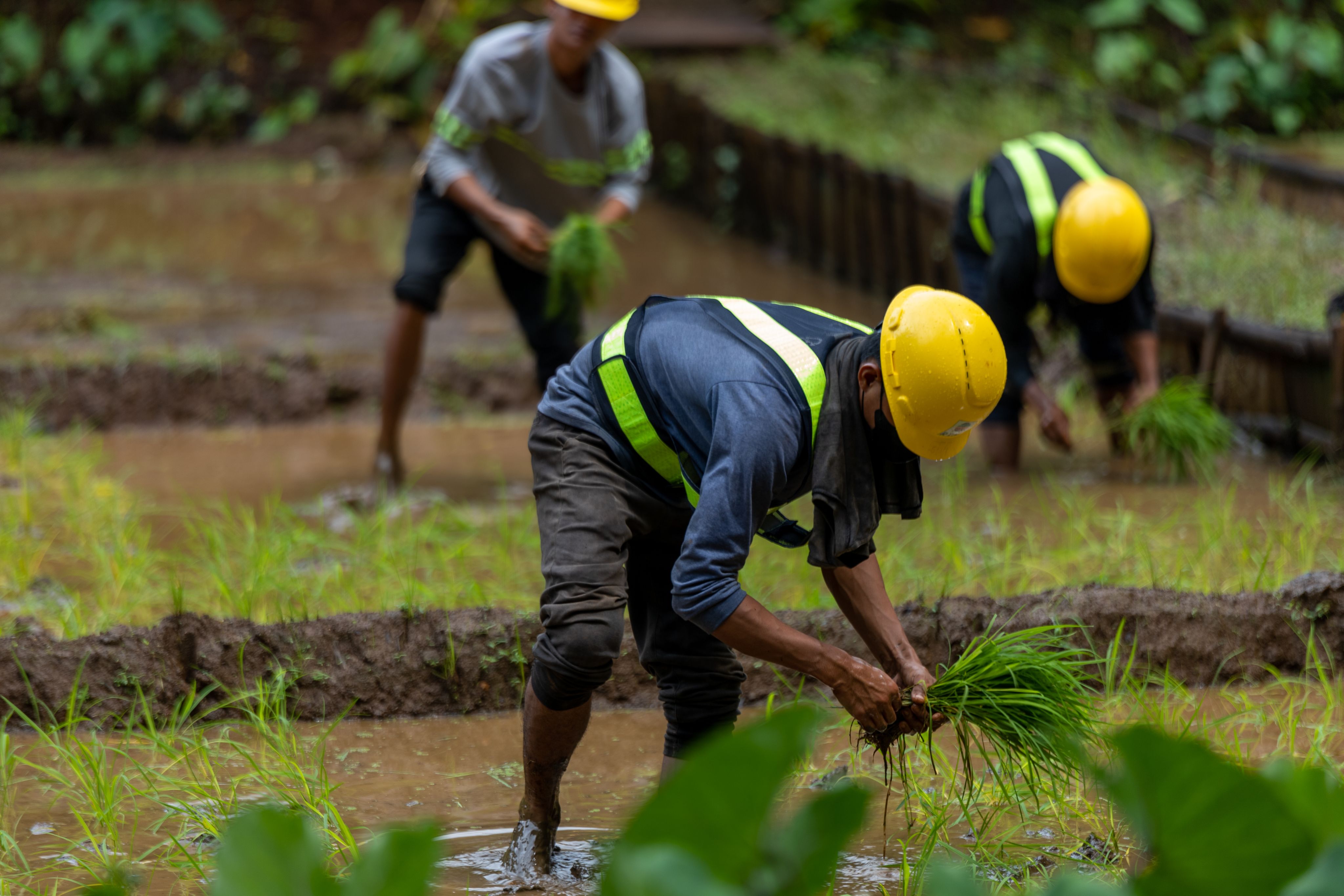
Workers from the Indigenous peoples community plant rice in the rehabilitated forest of Rio Tuba Nickel Mining Corp (RTMC) in Bataraza.
Workers from the Indigenous peoples community plant rice in the rehabilitated forest of Rio Tuba Nickel Mining Corp (RTMC) in Bataraza.
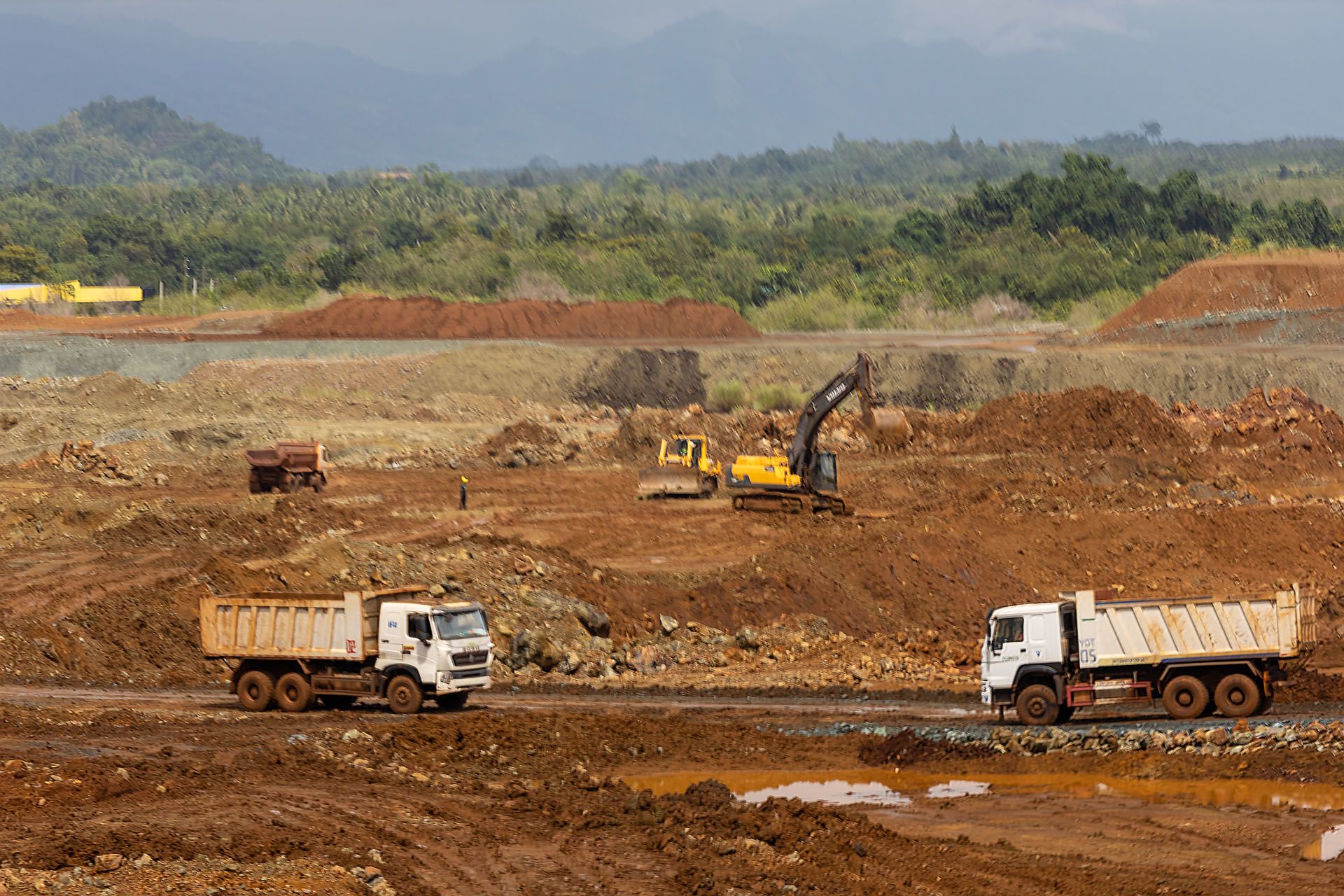
Trucks load nickel ore in the open-pit mine of Rio Tuba Nickel Corp.
Trucks load nickel ore in the open-pit mine of Rio Tuba Nickel Corp.
A total of 46 new mining applications for nickel have been submitted to the Philippine government. Most of the planned mines are in the Luzon island group, including the archipelagic province of Palawan.
This was after a nine-year moratorium on granting new mining permits was lifted, in the government’s bid to boost revenues as the country recovers from the Covid-19 pandemic.
Located between the South China and the Sulu seas, Palawan is known as the last frontier of the Philippines, being home to 105 threatened species of flora and fauna.
The province has five ongoing nickel mining projects, including the one by Ipilan Nickel Corporation (INC) in Brooke’s Point, and another by Rio Tuba Mining Corp in Bataraza.
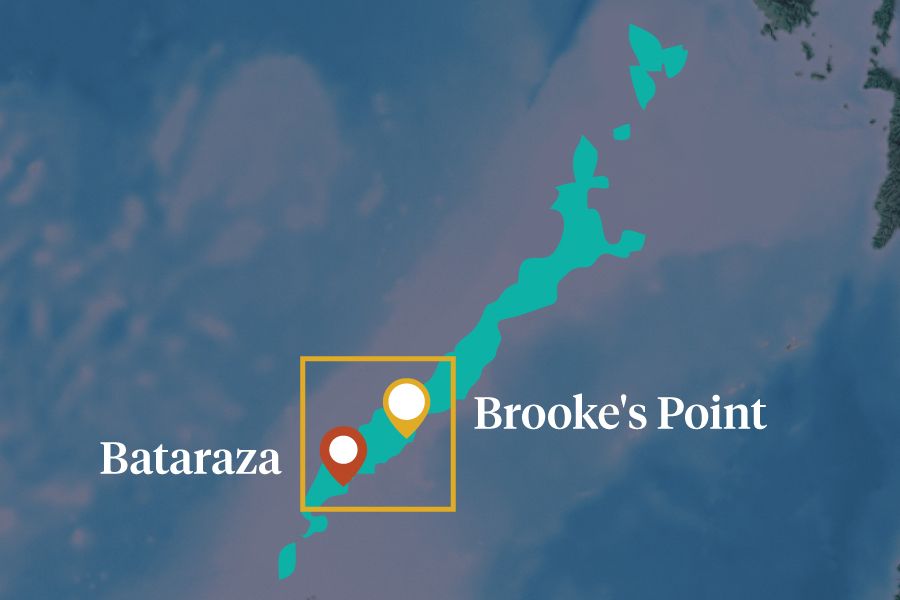
In Bataraza, the Rio Tuba Mining Corporation is expanding its operations, mainly to meet demand for nickel from countries such as China and Japan. These are mostly at locations that had previously been designated by the Palawan authorities as “areas of maximum protection” on Mt Bulanjao. Extraction of metals were not allowed, since the sites were rich in biodiversity – specifically species and plants that were endemic to the province.
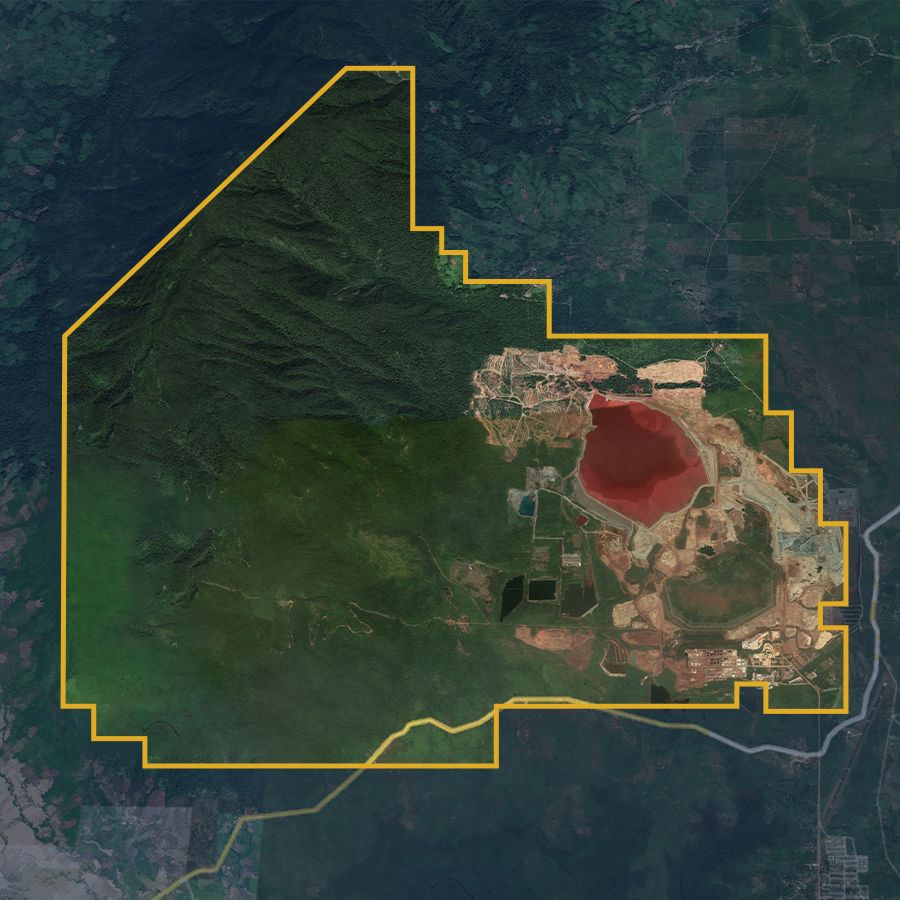
The yellow polygon outlines Rio Tuba’s proposed expansion along Mt Bulanjao in Bataraza, Palawan. Exposed earth shows the extent of the current mine site.
The yellow polygon outlines Rio Tuba’s proposed expansion along Mt Bulanjao in Bataraza, Palawan. Exposed earth shows the extent of the current mine site.
Meanwhile, one of Rio Tuba Mining Corporation’s major shareholders is Sumitomo Metal Mining Co., the main supplier of nickel for electronics company Panasonic. The raw nickel is used to produce lithium-ion batteries which power the electric cars of Tesla and Toyota.
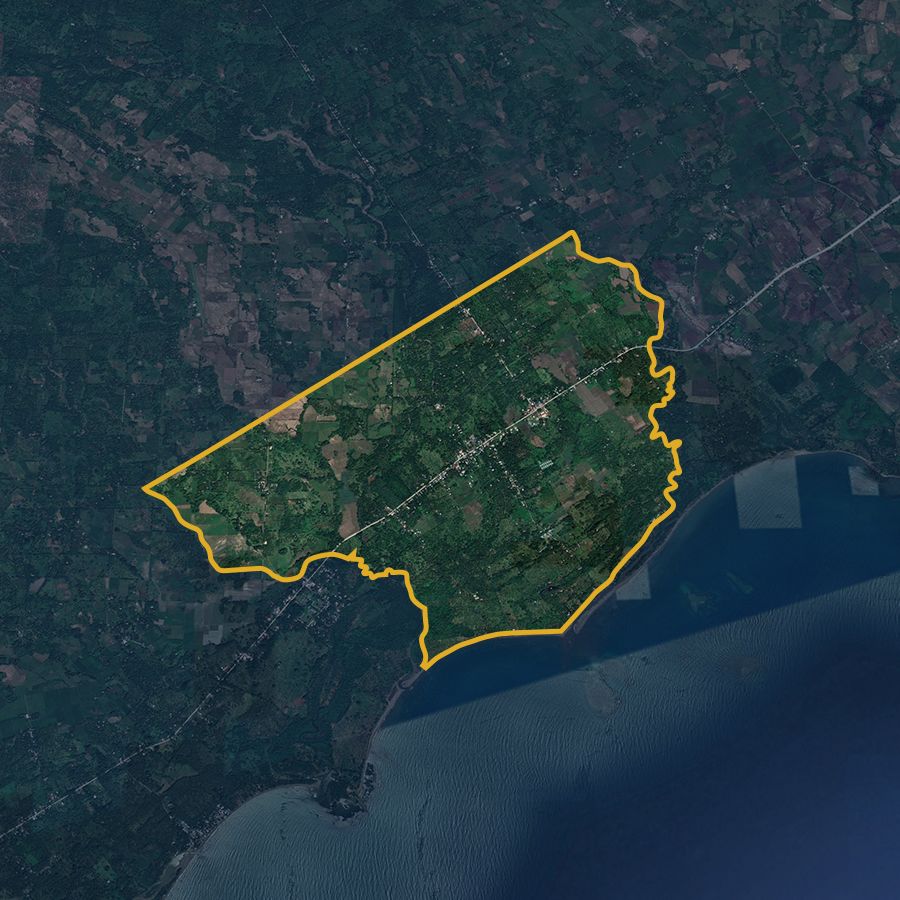
At Brooke’s Point, Ipilan Nickel Corporation recently made its maiden shipment – 54,700 wet metric tonnes (WMT) of medium-grade nickel ore – to Guangdong, China. The annual target is set at 500,000 WMT, with increased production in the coming years.
Its buyer – China’s Guangdong Century Tsingshan Nickel – has a large and expanding overseas nickel footprint. On the homefront, however, it has faced bans from the central government for running steel mills in breach of environmental and safety regulations.
The Philippines government regards mining as a “key driver” for economic growth, according to its finance secretary Benjamin Diokno.
Its latest administration pledged stronger safeguards, such as by re-joining a Norway-led “Extractive Industries Transparency Initiative” that champions data disclosure and civil society participation in decision-making. There are also laws mandating that miners provide alternative livelihoods to displaced communities – steps the INC and RTMC say have been done.
“As long as the mines abide by these policies, for example by ensuring that the people being displaced are going to have jobs, I believe that responsible mining is possible.” said Christian Arranz, a mining expert at the University of the Philippines.
Responsible mining broadly refers to carrying out extraction activities while minimising the environmental and social ills these activities bring. Best practices also include being more consultative with local communities.
Critics decry ties between government officials, including senators, and mining majors. Advocacy groups such as the Philippine Misereor Partnership have slammed the country’s mining push, saying that the sector is not a significant source of revenue and jobs.
Mining contributed to 1 per cent of the Philippines’ gross domestic product in 2021. Philippine Misereor Partnership said the sector generates only 205,000 jobs a year, in a country with over 75 million working-age adults.
Mining firms in the Philippines have been found in the past to have been lax in due diligence. At the height of a crackdown against mining by former environment chief Gina Lopez in 2016, three nickel mines were suspended all in a span of a week because they either affected corals or illegally cut trees.
Southeast Asia is a region with a mottled history of mineral extraction that goes back centuries.
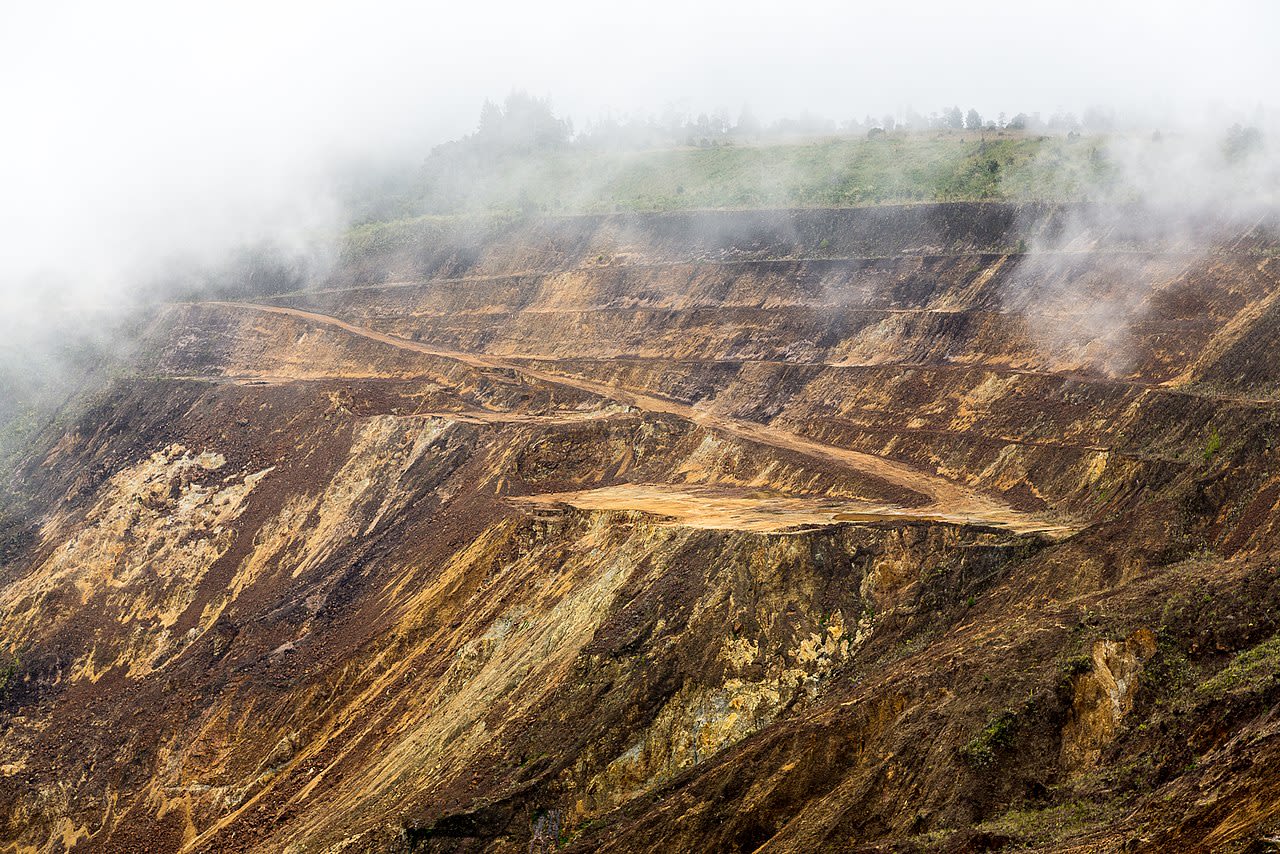
A copper mine in Sabah, Malaysia. Image: Flickr/ CEphoto, Uwe Aranas.
A copper mine in Sabah, Malaysia. Image: Flickr/ CEphoto, Uwe Aranas.
The two traditional nickel producers – Philippines and Indonesia – entered the global market about half a century ago, on the back of new processing technologies and increasing demand for its use in steelmaking.
Apart from these two countries and Papua New Guinea, the world’s search for nickel had largely passed over Southeast Asia previously.
Things have changed as climate change rages on. The reinvigorated push to seek out energy transition minerals, along with a desire to expand supply chains beyond the few incumbents that include Chile and the Democratic Republic of Congo, have brought mining firms to new frontiers in Southeast Asia.
In Thailand's Southern Phang Nga province which borders the Andaman Sea, Singapore-based, Australia-listed Pan Asia Metals is exploring for lithium at two sites.
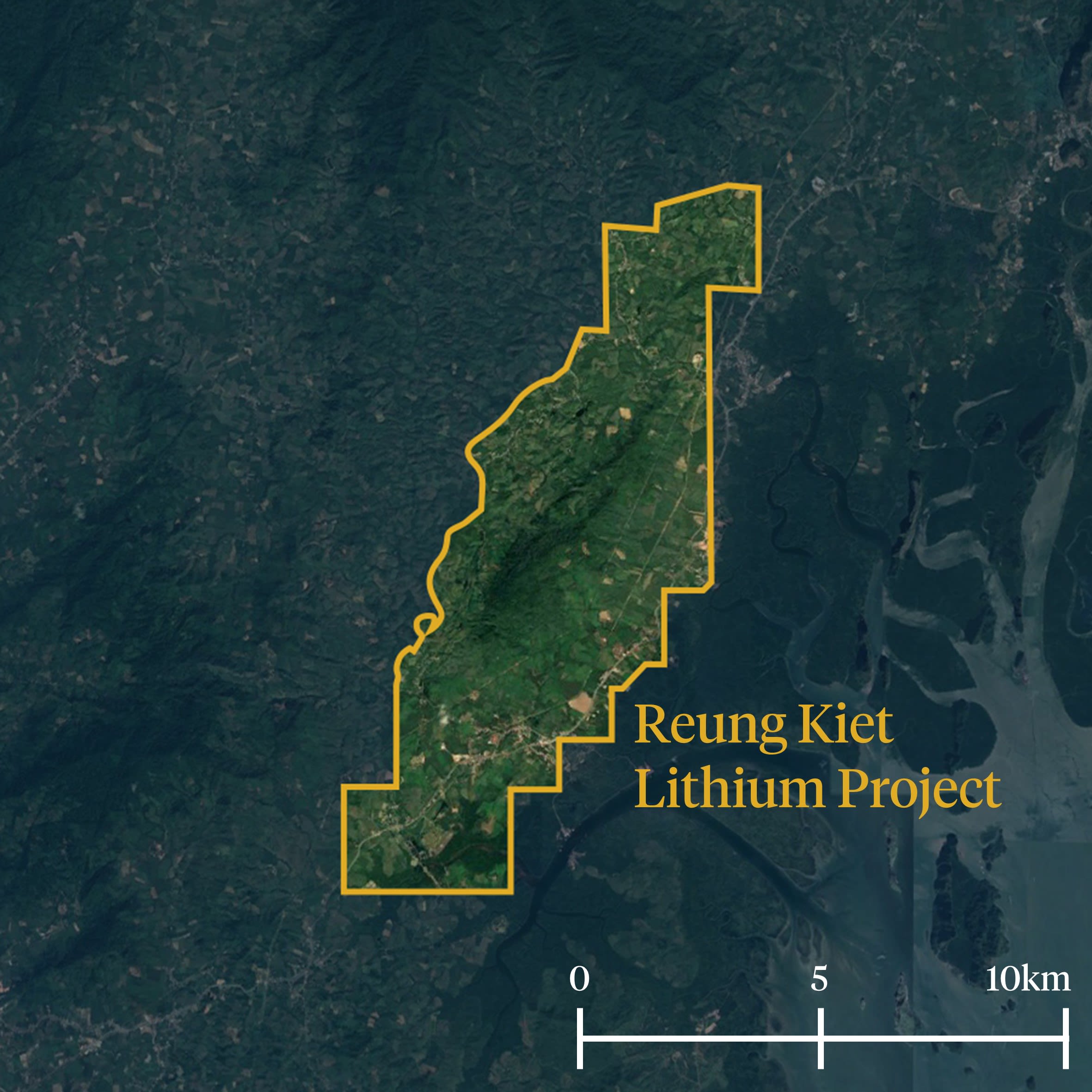
Data: Pan Asia Metals.
Data: Pan Asia Metals.
In Reung Kiet, an old tin mine, permission was granted in 2019 for the firm to conduct exploratory drilling in a 40km2 site.
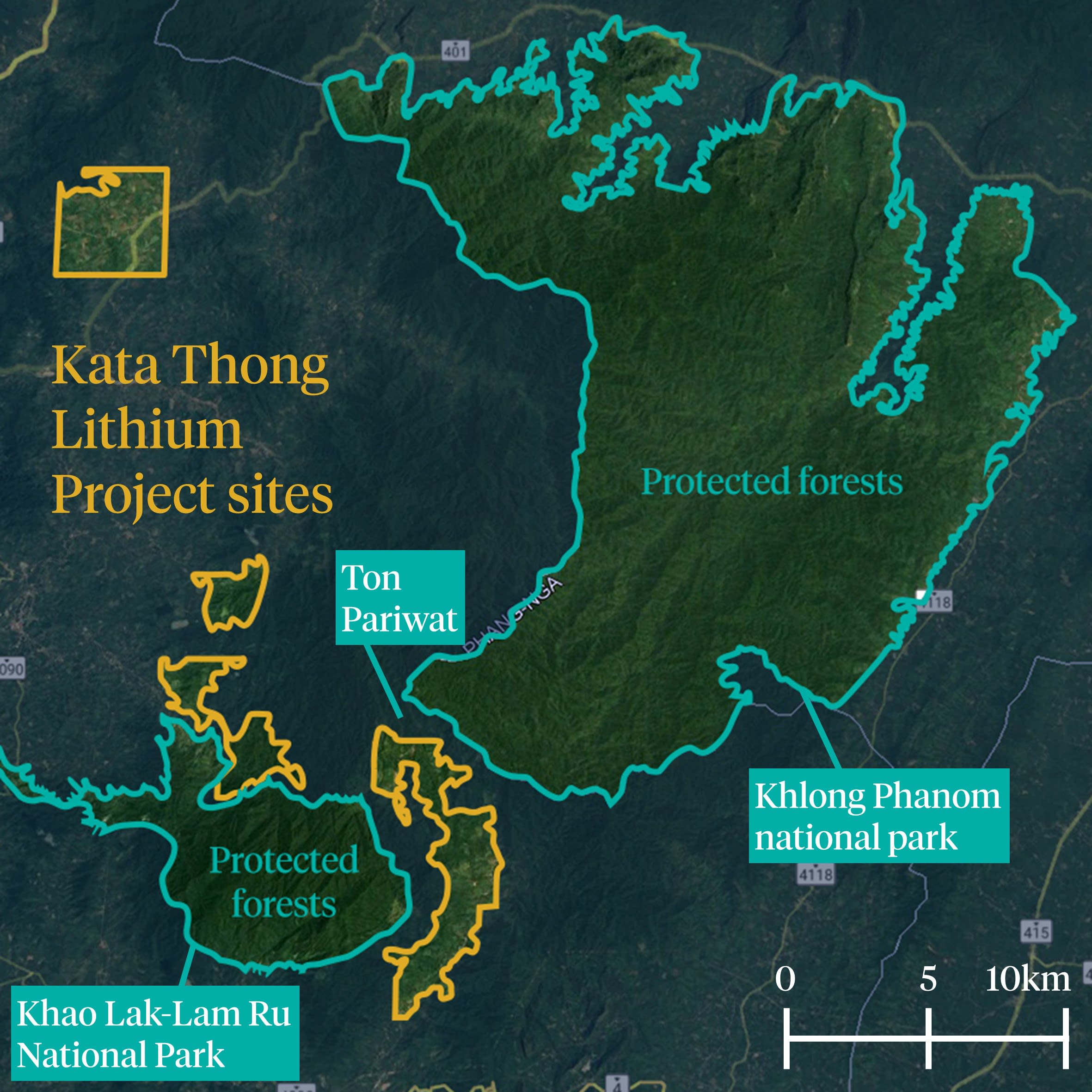
Data: Pan Asia Metals.
Data: Pan Asia Metals.
Pan Asia Metals also filed applications last year to look for lithium at Kata Thong, another site about 40 km north of Reung Kiet. Kata Thong project sites sit next to two national parks and the Ton Pariwat wildlife sanctuary.
The space has gotten crowded. In February 2022, Australian competitor Matsa Resources announced its acquisition of lithium prospecting licenses for areas totalling over 900km2, some of which borders Pan Asia Metals’ sites.
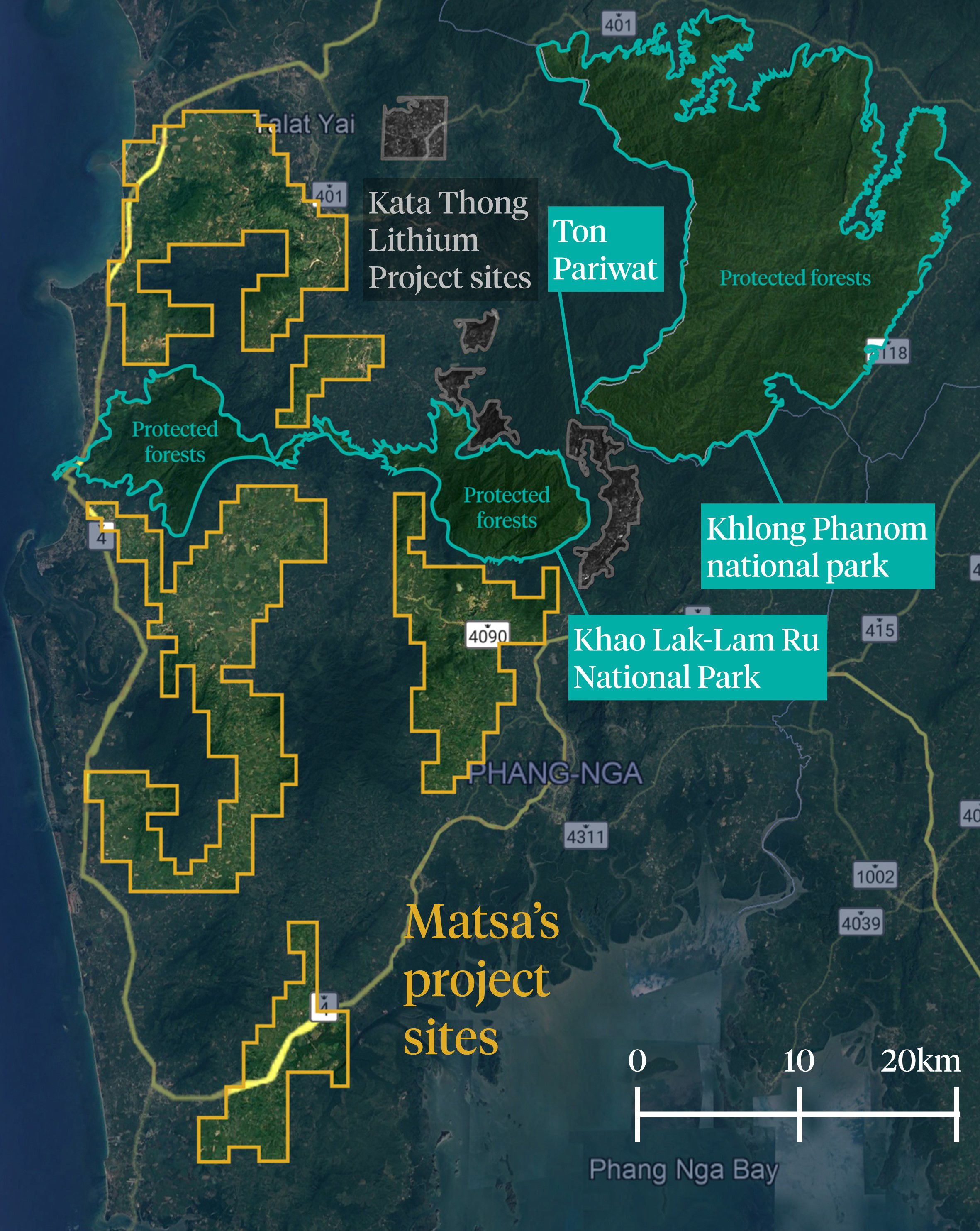
Data: Matsa Resources.
Data: Matsa Resources.
The firm said that it had regular dialogues with Thai forestry and agriculture officials. Steps are being put in place to allow for exploration activities “where previous impediments existed”. Matsa did not respond to email queries for clarification.
Both Pan Asia Metals and Matsa project areas appear to cover land used for tourism, like hotels and rafting centres. Matsa did not respond to queries; Lock said that “if not yet, then at some point the business owner or landlord would need to be consulted” before access can be given for mineral exploration.
Mining activity is also picking up in Vietnam. An existing mine in Son La province, located about 160 km west of capital Hanoi, had seen start-stop operations since 2008. Now Australian firm Blackstone Minerals wants to expand its footprint there. It is proposing the development of an open-pit mine next to the existing underground mine.
Production is slated to start in 2025.
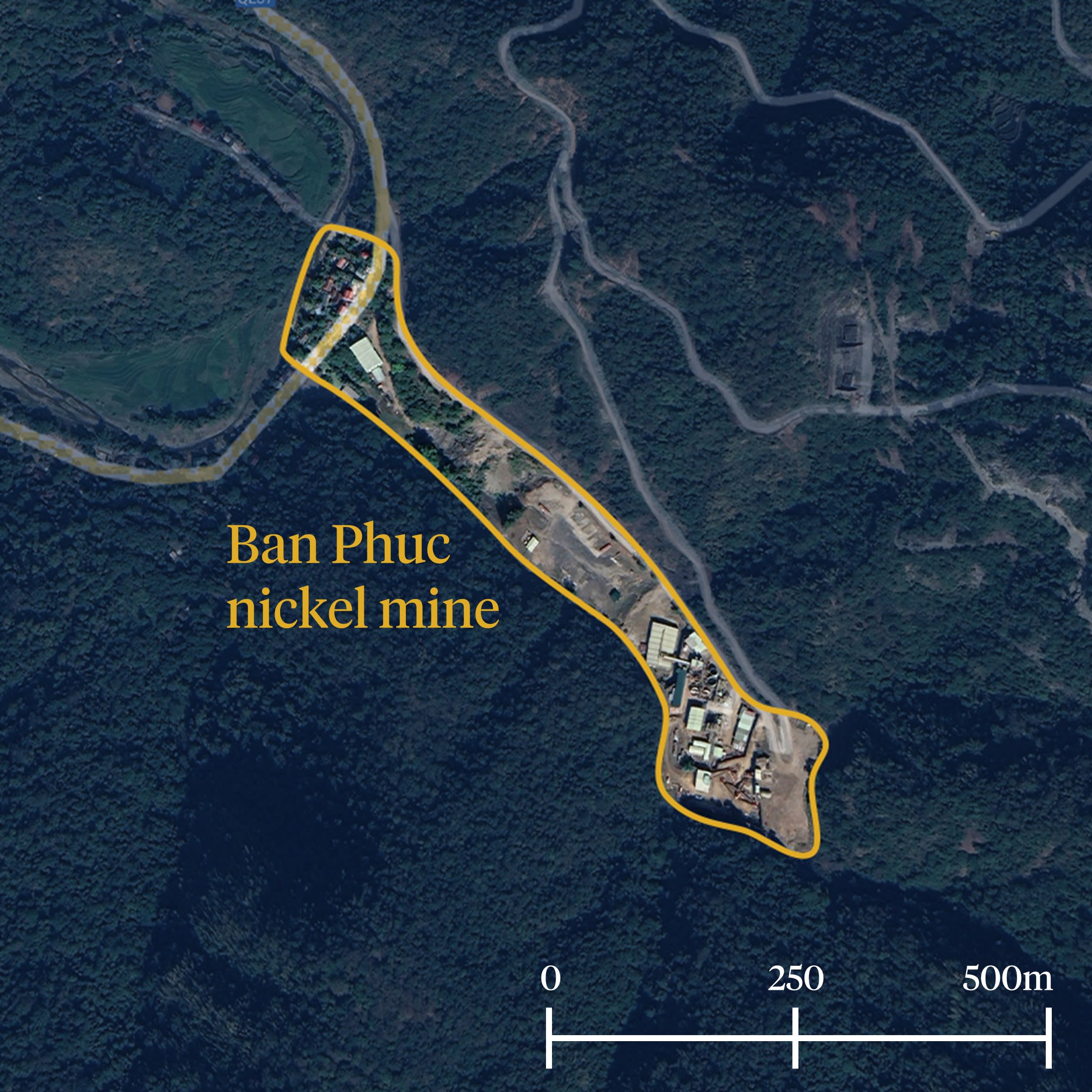
It is also interested in staking a claim on an area known as Chim Van, in an area about 10km away from the Ban Phuc mine. Exploratory drilling by the firm there was approved by the Vietnam government in April 2022.
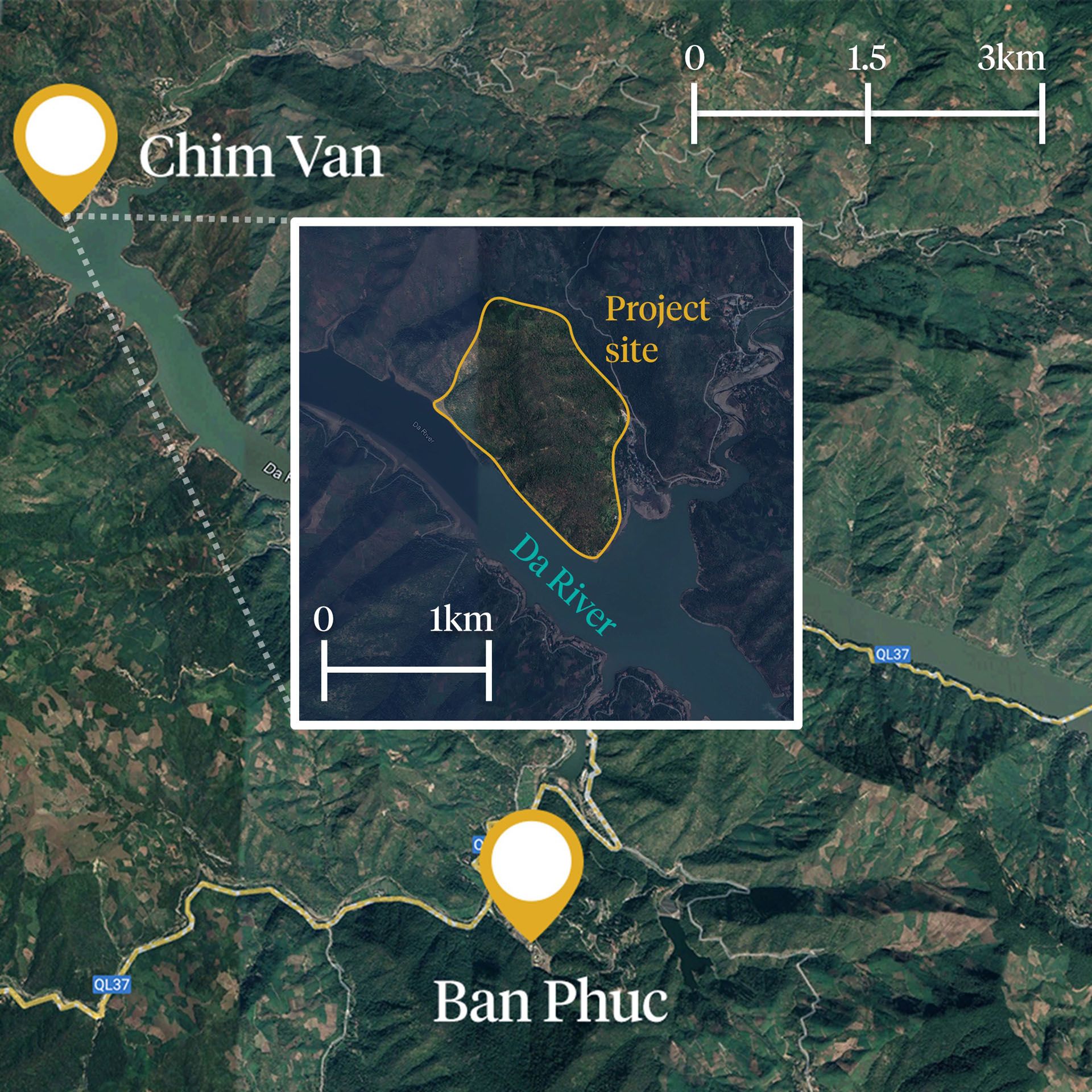
Data: Blackstone Minerals.
Data: Blackstone Minerals.
Further south, in Vietnam's central Quang Ngai province, government-led expeditions have found lithium in a district called La Vi. Since the discovery in 2009, several studies involving German, South Korean, American and local institutes have been conducted in the area. It is unclear whether any corporation is eyeing the deposits.
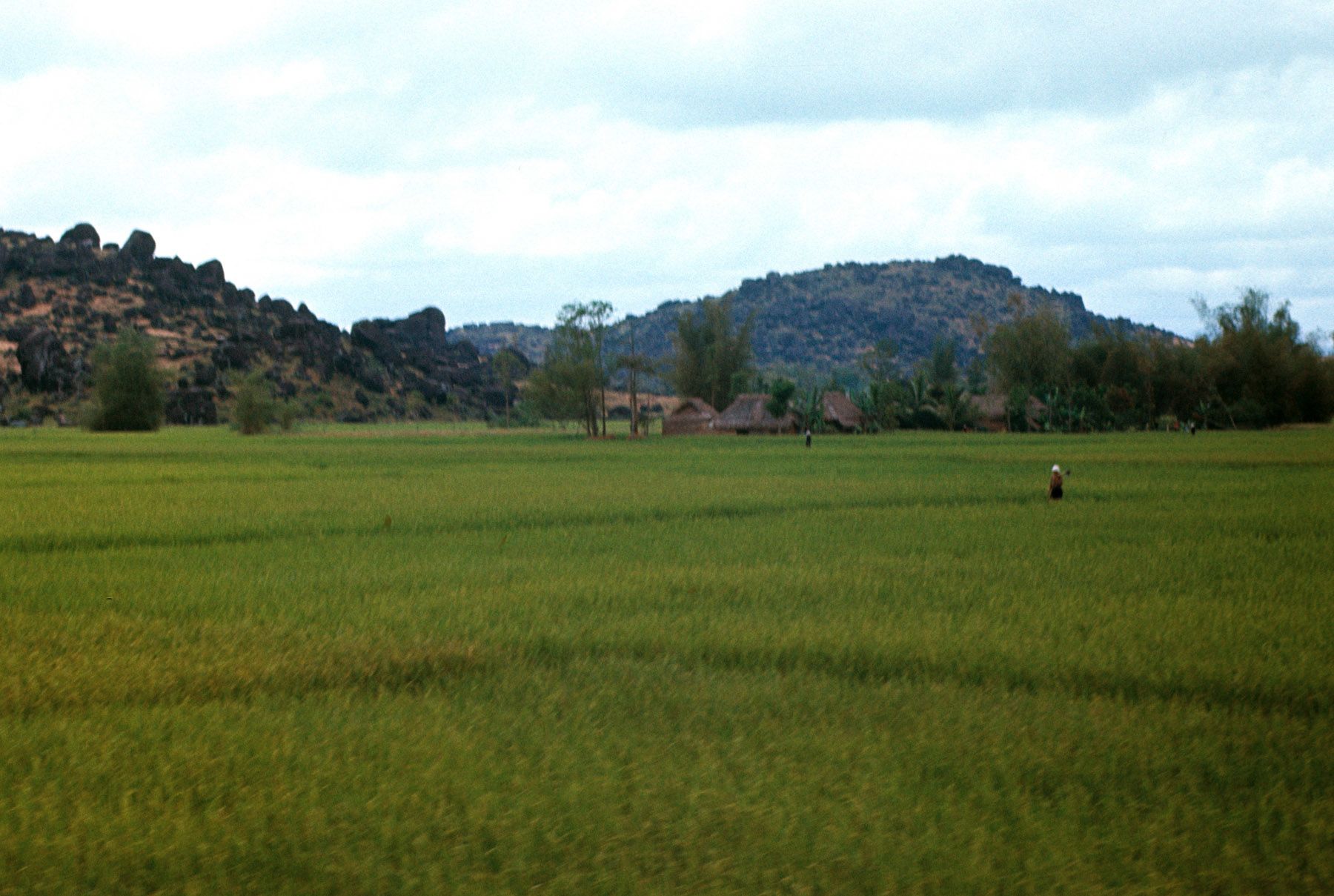
Farms and hills in Quang Ngai province. Image: Flickr/ manhhai.
Farms and hills in Quang Ngai province. Image: Flickr/ manhhai.
In western Laos, Santana Minerals, an Australian firm, had previously been seeking out minerals like nickel and cobalt, along with gold, at a site in Sainyabuli province.
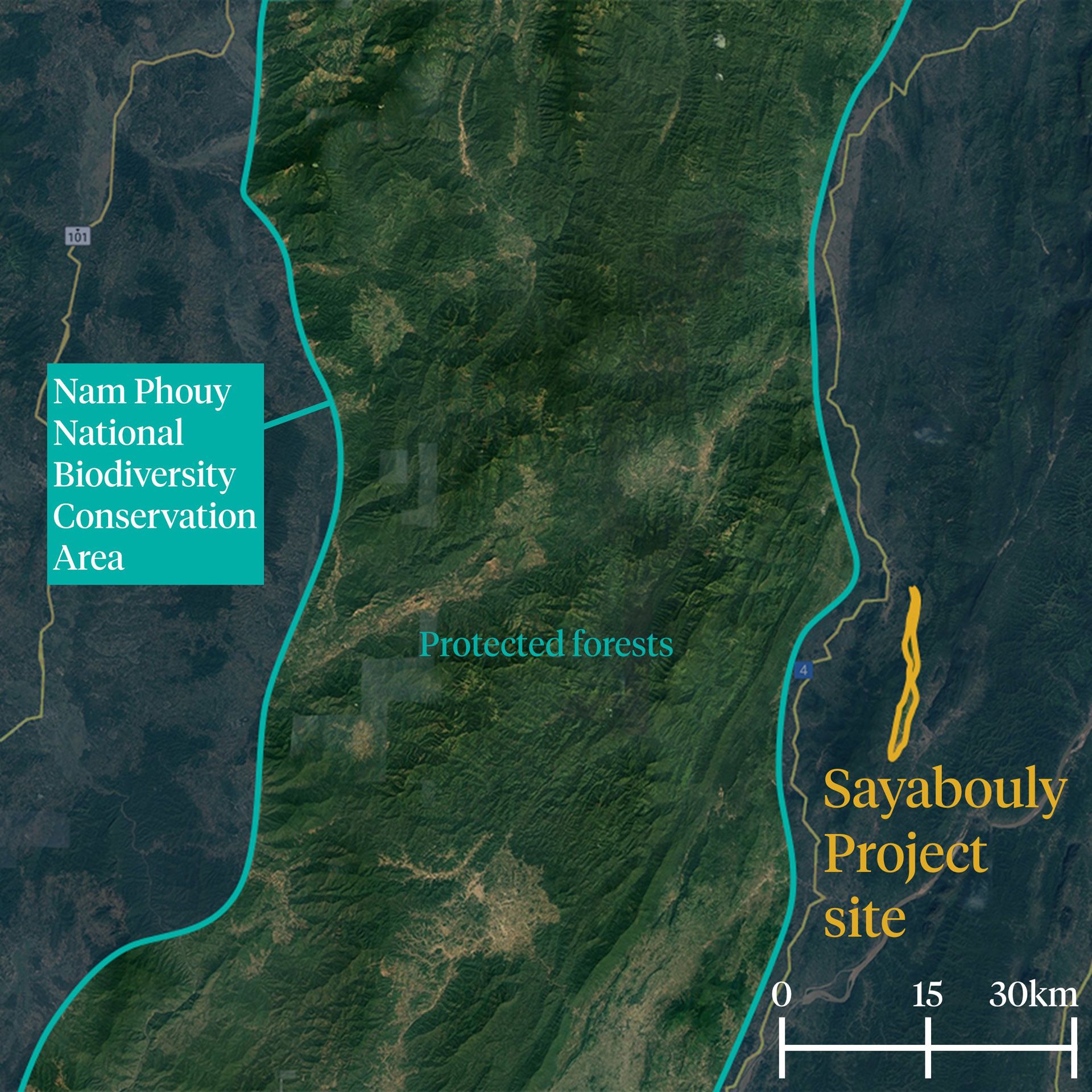
Data: Santana Minerals.
Data: Santana Minerals.
The site, adjacent to a biodiversity conservation area, had already been heavily mined and is home to copper and gold digging operations.
In 2020, the firm decided to limit its activities in Laos, citing projections of unfavourable commodity prices. It pulled out of the venture entirely in early 2021.
Following Myanmar’s military coup in February 2021, foreign projects largely ground to a halt, ending the inflow of projects from Western firms since trade embargoes were lifted in the early 2010s.
One example is Canadian firm AsiaBaseMetals, which exited Myanmar, citing Covid-19 and prevailing market uncertainties as reasons for its decision to quit the market. It was previously seeking out lithium in central Myanmar, in an area near the settlements of Thazi and Hlaingdet, and had said that it was doing so as the country bordered China and India, two economic powerhouses hungry for batteries.
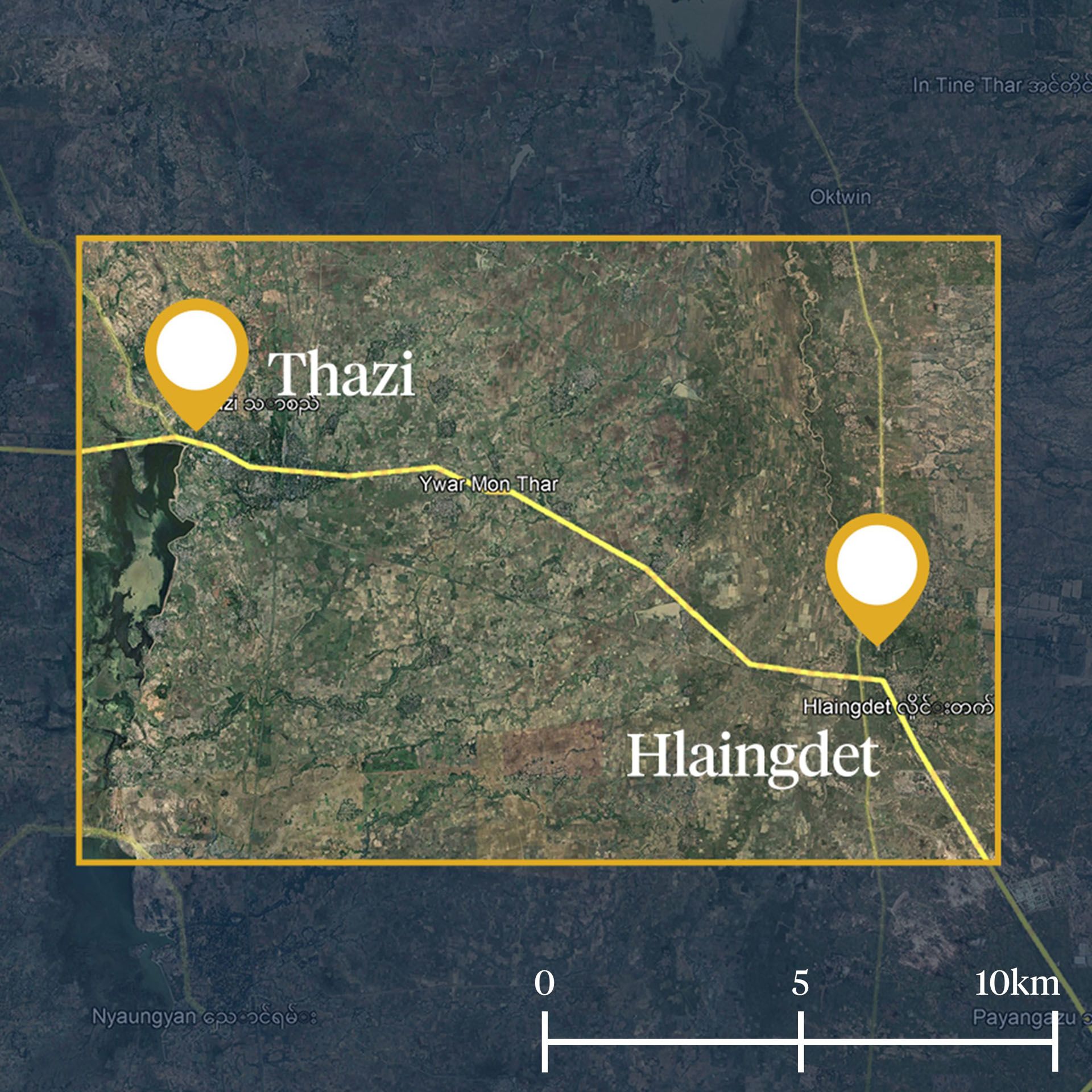
Australian firm Mallee Resources, which had till early this year been named Myanmar Metals, had also been exploring a historic mining site in Bawdwin since 2017. It had reported good nickel and cobalt finds. Mallee Resources divested from its project soon after the coup.
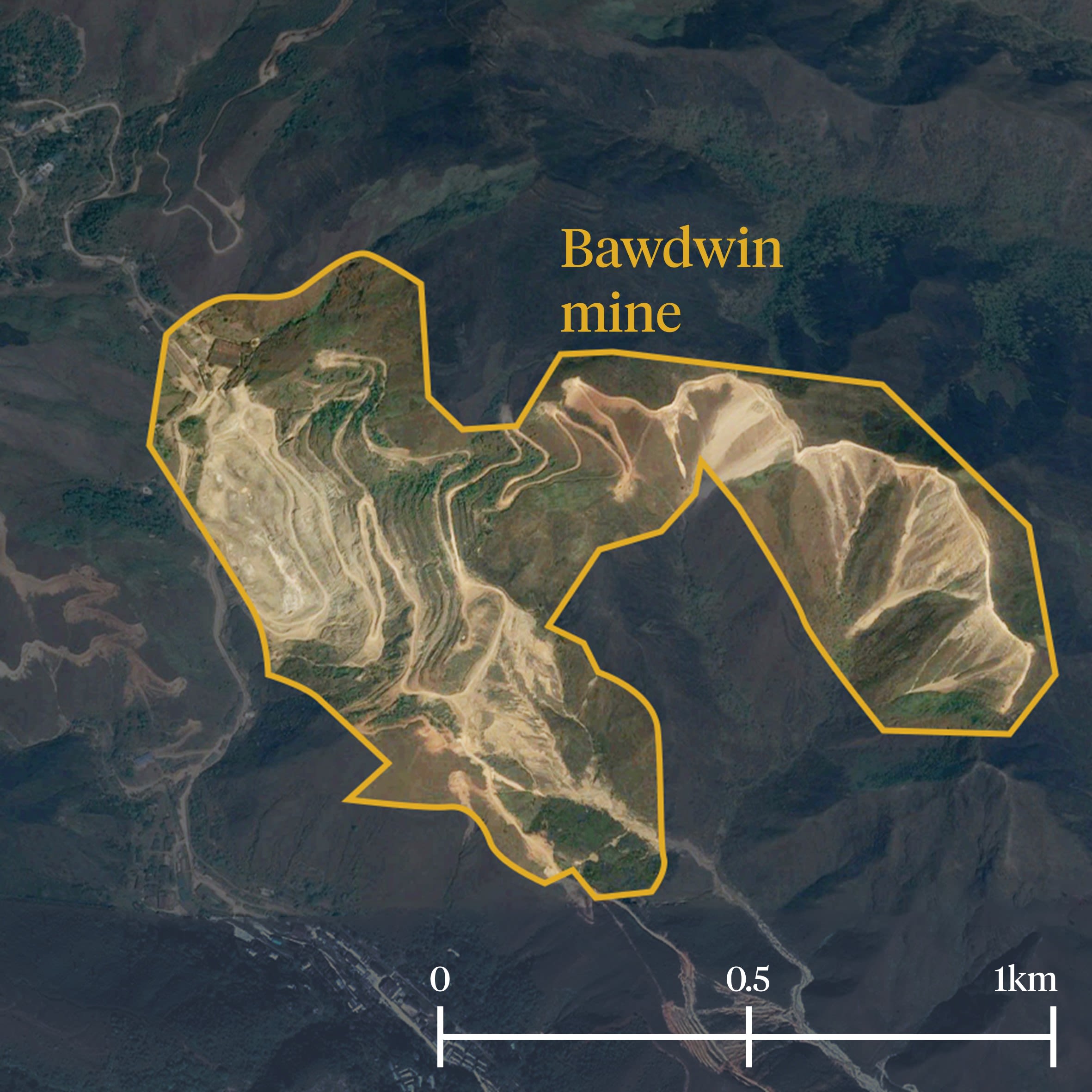
Meanwhile, Chinese firms are still active in Myanmar. At Mount Tagaung in Mandalay, the largest nickel mine in the country is still operating and running at 70 per cent capacity. It is owned by Chinese companies, China Nonferrous Metal Mining and Taiyuan Iron & Steel.
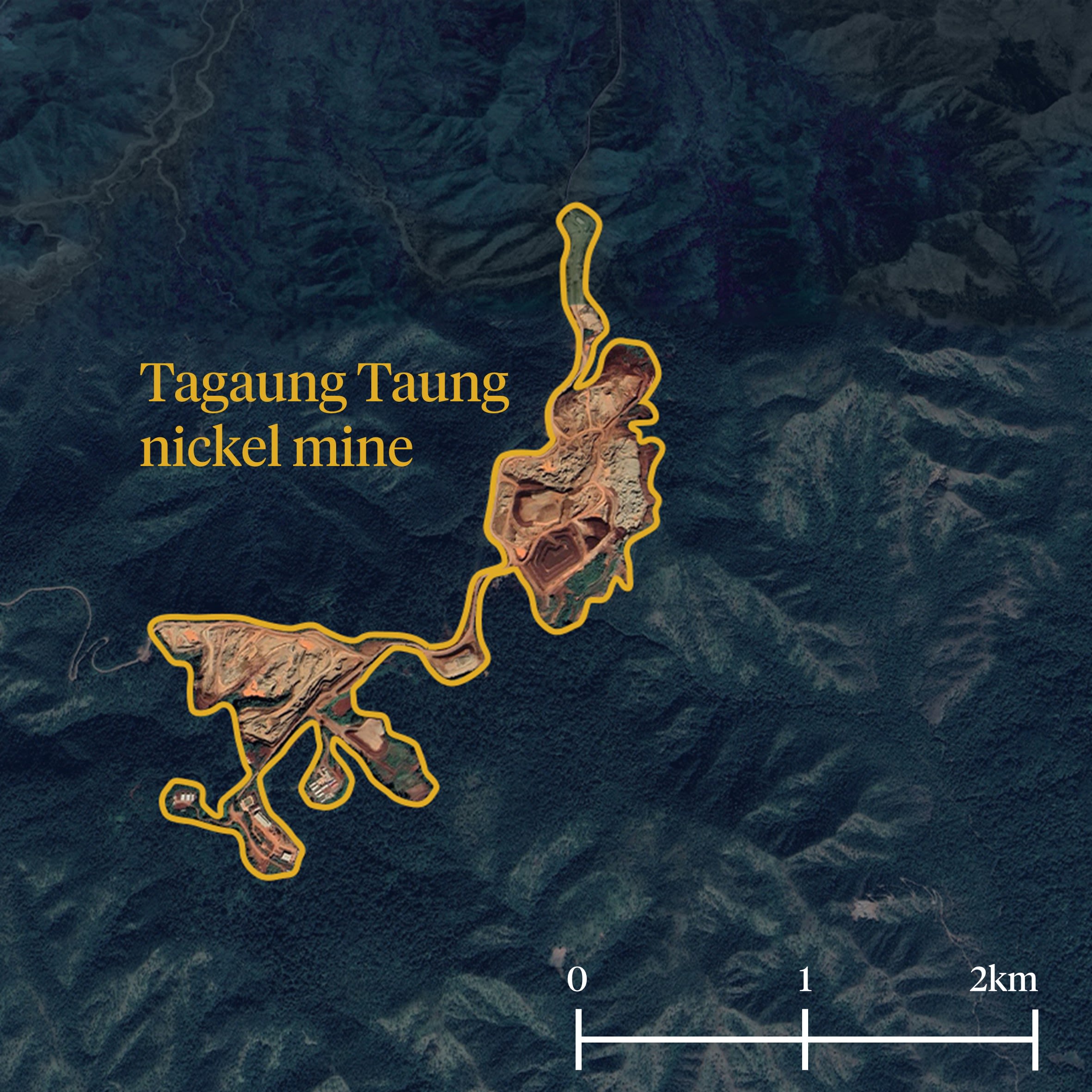
Associate professor Nguyen Thi Hoai Nga, a mining expert at the Hanoi University of Mining and Geology, said that foreign investments into mining energy transition minerals in some Southeast Asian countries have been forthcoming because the governments are signalling that they welcome the activities.
“Other countries want to invest in Southeast Asia because they know that Southeast Asia still wants to mine,” she said. Both Vietnam and Thailand have said they want to be domestic producers of electric cars.
Doing business in Southeast Asia can also be cheaper than in more developed markets.
“The reason we are in Southeast Asia is that we want to be competitive,” Lock from Pan Asia Metals said on an investment talkshow, adding that projects in the region are “low on the cost curve” and allows the firm to be near its customers.
There are risks. The situation in Myanmar epitomises the dangers of mining in a region with a wanting record for lax enforcement and human rights protection. An Australian advocacy group found that Chinese mining investments had provided the Burmese military US$725 million in 2020 and 2021.
Environmental and governance risks also predate the coup. Ethnic armed groups in the country are known to enforce their own rules and payments. Communities living around the Tagaung Taung mine have complained of illegal land grabs and water pollution.
“I do not know if it makes a huge amount of difference to them if [these minerals] go into electric cars. I do not know if it is something that would resonate very much with the people,” said Edith Mirante, project director of Myanmar environment and human rights publication Project Maje.
Community safeguards in mining across Southeast Asia appear to be an uneven mix. Protection for Indigenous peoples is not explicit in countries like Vietnam and Thailand, though environmental and local community clauses do exist in their mining laws.
“Many large corporations have, over the years, scaled back their operations in certain mineral-rich Southeast Asian jurisdictions as they considered, rightly or wrongly, that it would be difficult to operate in such jurisdictions whilst remaining compliant with all of the high-level global compliance and anti-corruption standards they are subject to,” said Dan Perera, an energy and minerals expert at law firm Hfw.
Mining firms Blackstone Minerals, Santana Minerals, AsiaBaseMetals and Mallee Resources did not respond to requests for comment about their operations in Southeast Asia. Lock of Pan Asia Metals said his firm goes beyond what is mandated in Thailand, by having a sustainability strategy that includes initiating a local school programme and having anti-corruption training for staff.
Observers say the biggest sustainability risk for Southeast Asia’s foray into transition minerals is human rights abuse. According to data published in May by a human rights watchdog, there were close to 500 abuse allegations related to the extraction of energy transition minerals from 2010 to 2021, of which 33 were in the Philippines, Indonesia and Myanmar, and mainly involving copper and nickel mining.
Pochoy Labog, the researcher who worked on the study, believes the actual number is higher. Labog is also based in the Philippines, and he says that where he is, a crackdown on human rights defenders and the civic space has made reporting abuses risky.
“The numbers now are just scratching the surface,” he said, adding that human rights activists have been branded terrorists or communists by the authorities and this has affected the movement to oppose mining. The Philippines routinely ranks as the world’s troublespot for human rights defender killings.
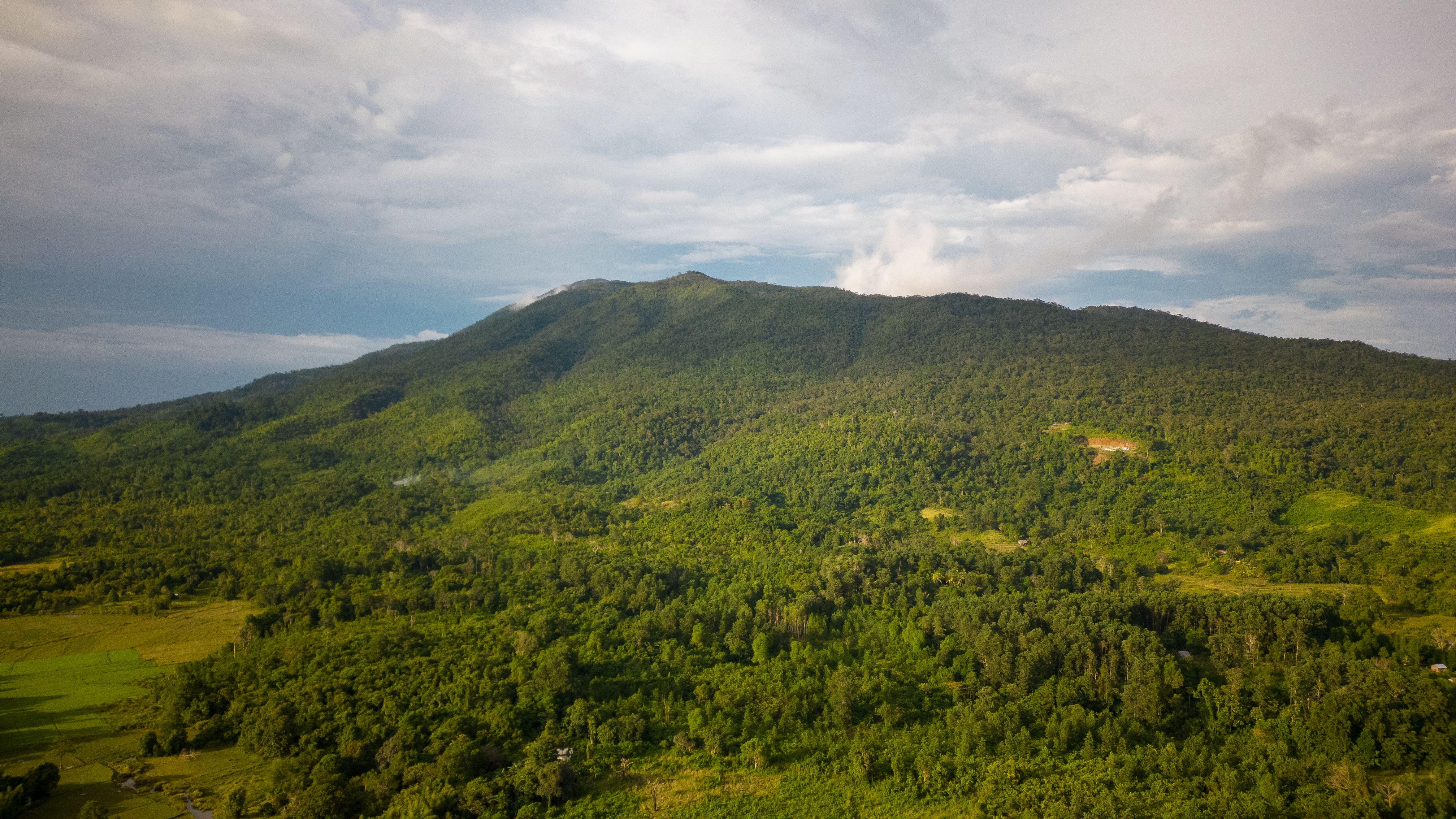
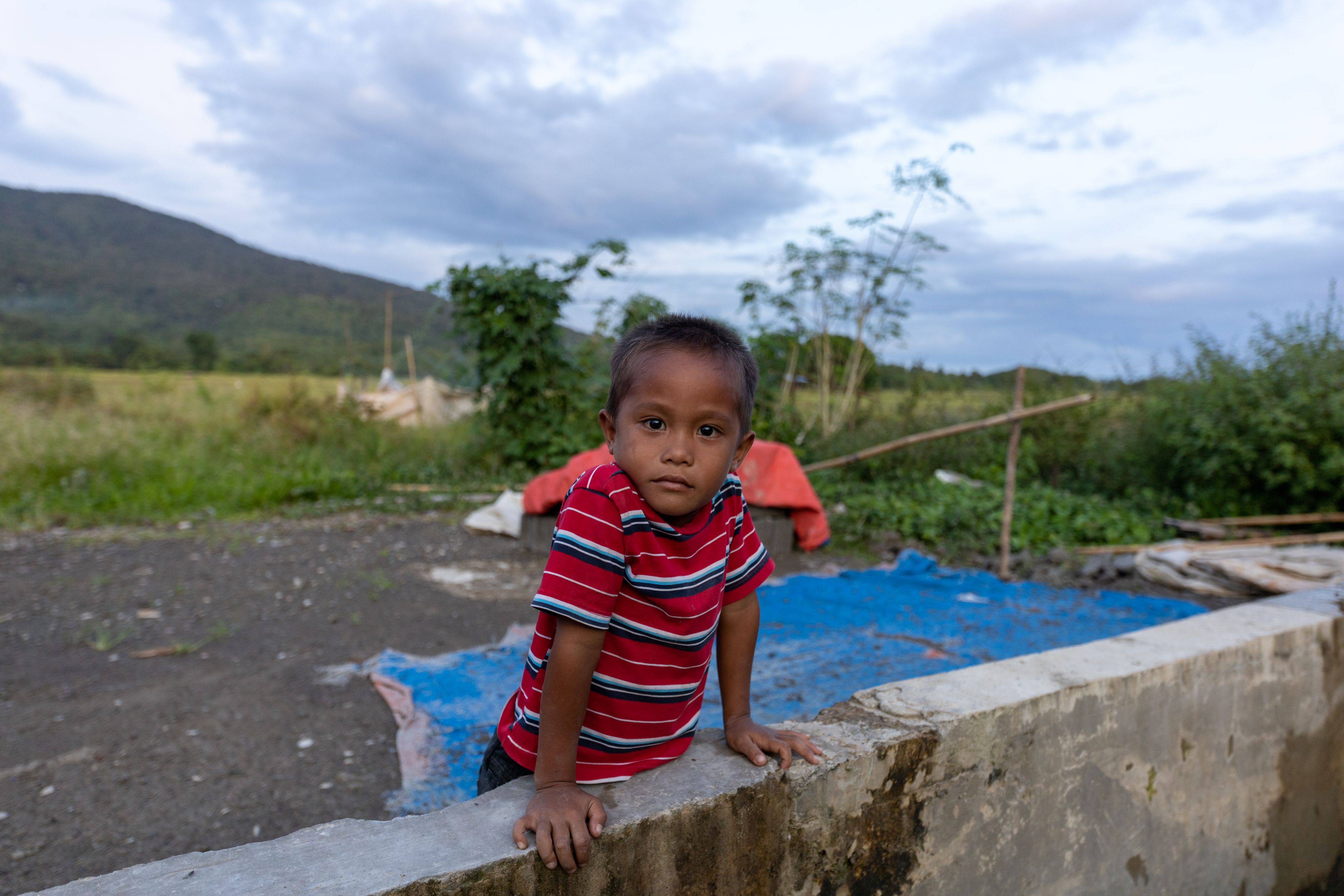
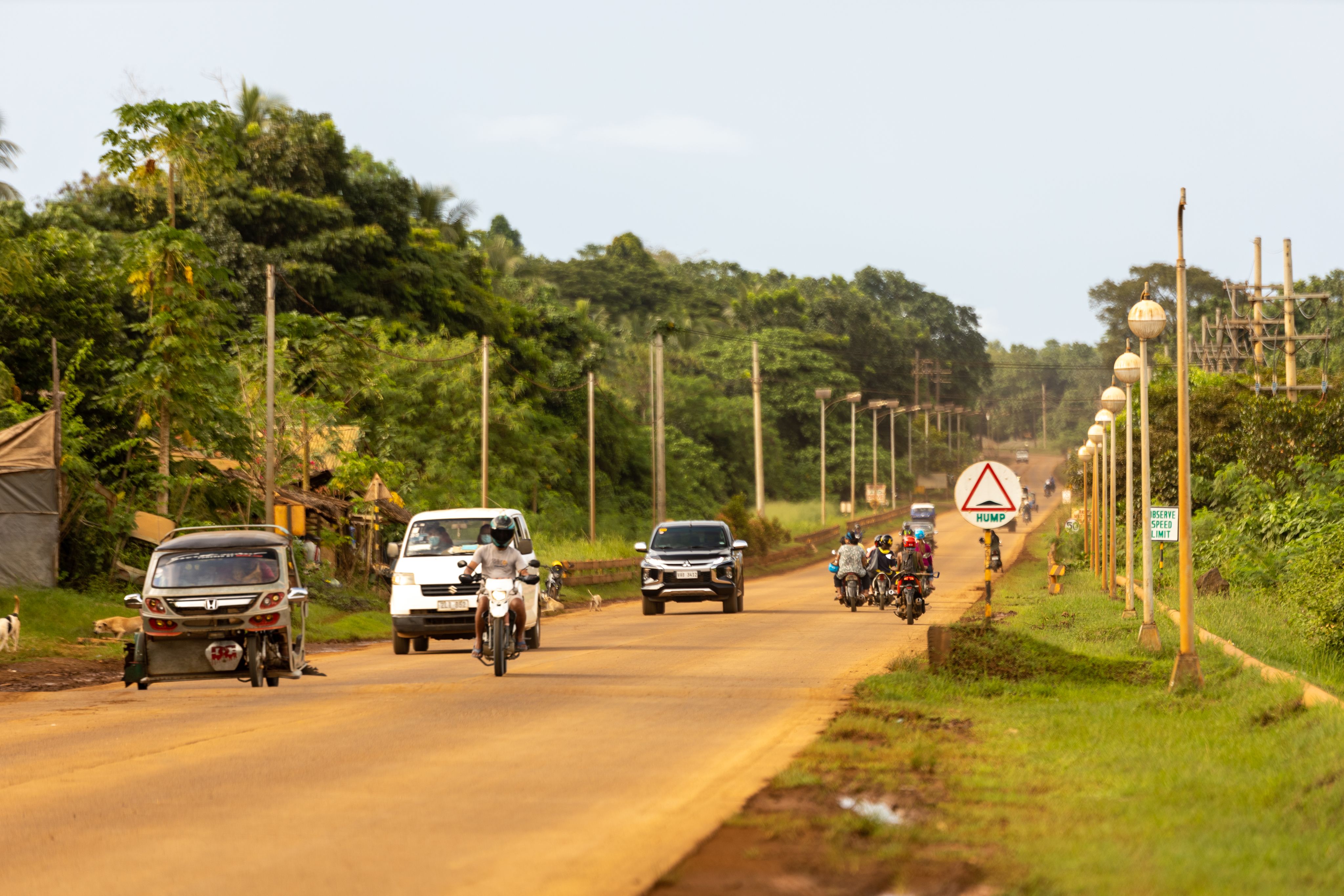

Rio Tuba Mining Corp is planning to expand its operations in Mt Bulanjao in Bataraza.
Rio Tuba Mining Corp is planning to expand its operations in Mt Bulanjao in Bataraza.

A young resident who lives at the foot of Mt Bulanjao in Bataraza.
A young resident who lives at the foot of Mt Bulanjao in Bataraza.

The national highway of Bataraza built by Rio Tuba Mining Corp.
The national highway of Bataraza built by Rio Tuba Mining Corp.
Another issue the Philippines face is the huge grey area in enforcement of mining safeguards, even if they are enshrined in law.
In Bataraza, Philippines, where Rio Tuba Mining Corp (RTMC) operates its mining sites, residents have said they have not been receiving legally mandated royalty payments
As Eco-Business observes during a recent trip to the RTMC mining site, anecdotal accounts from individuals, local chieftains, the mining firm, as well the Indigenous Peoples Development Office (IPDO), an entity set up in every town and which is tasked to act as the mediator for the disbursement of mining royalties to locals, vary drastically. Allegations of corruption and fund misuse run wild and there is plenty of finger-pointing.
According to public records by RTMC, almost US$4 million in royalties have been paid to the 38 tribal communities of Bataraza, but Eco-Business visited a community at the foot of Mount Bulanjao where residents like 57-year old Jeminda Bartolome claim they have not received a single centavo.
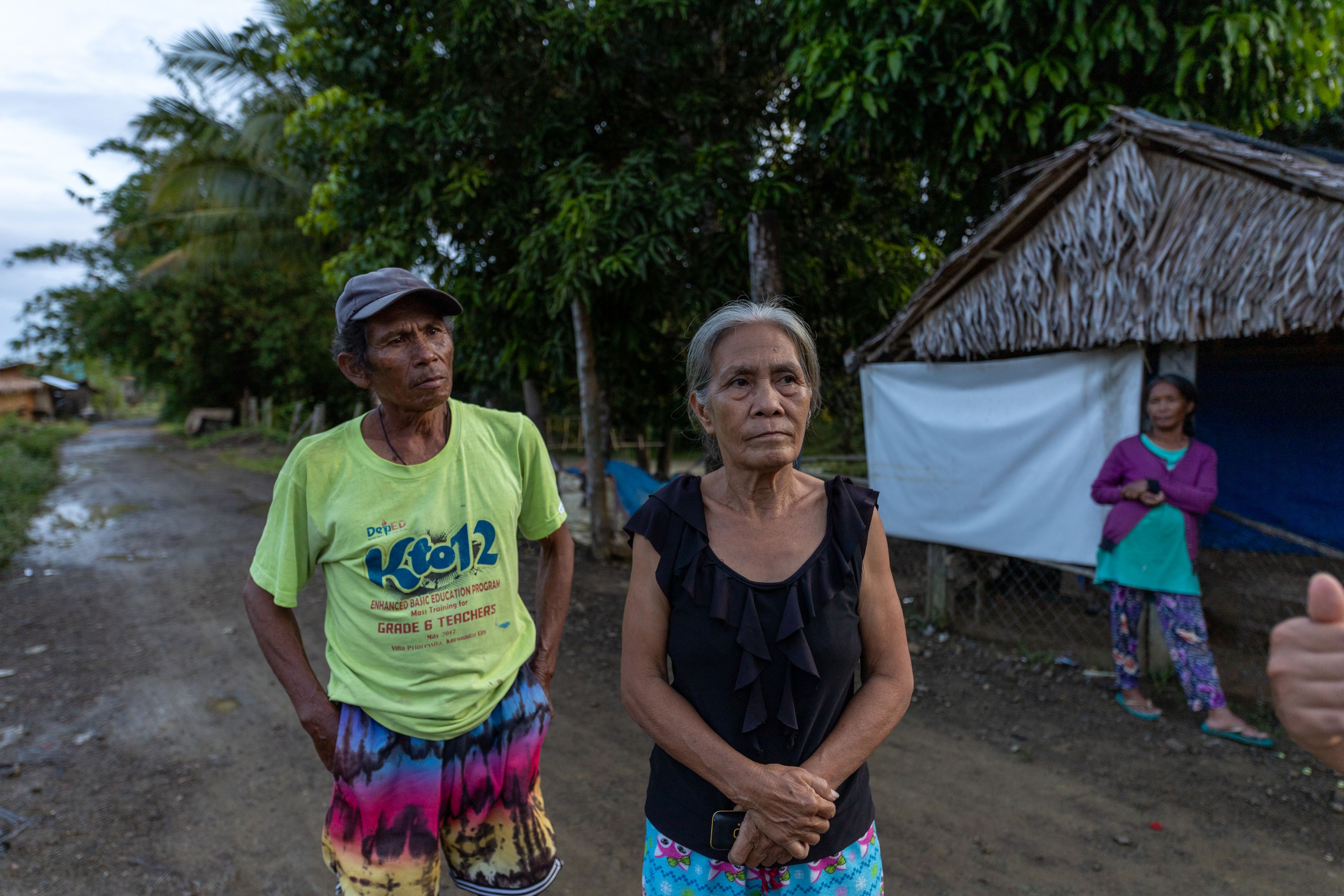
Jeminda Bartolome and her husband at their home in Bataraza.
Jeminda Bartolome and her husband at their home in Bataraza.
“Our chieftain chooses who to give the royalties and scholarships to. He gives it to those who are close to him or who he knows are pro-mining,” Bartolome told Eco-Business.
Even as RTMC previously said that it has measures in place to directly disburse the payments to locals to prevent corruption, the mine’s community relations manager Bong dela Rosa told Eco-Business that what the firm actually does is transfer the funds to the National Commission on Indigenous Peoples (NCIP), a central agency in the Philippines responsible for upholding the rights and protection of the communities.
Eco-Business was unable to track the money flows given the opacity of information, but statements from different individuals involved in the process for the town of Bataraza were corroborated against each other.
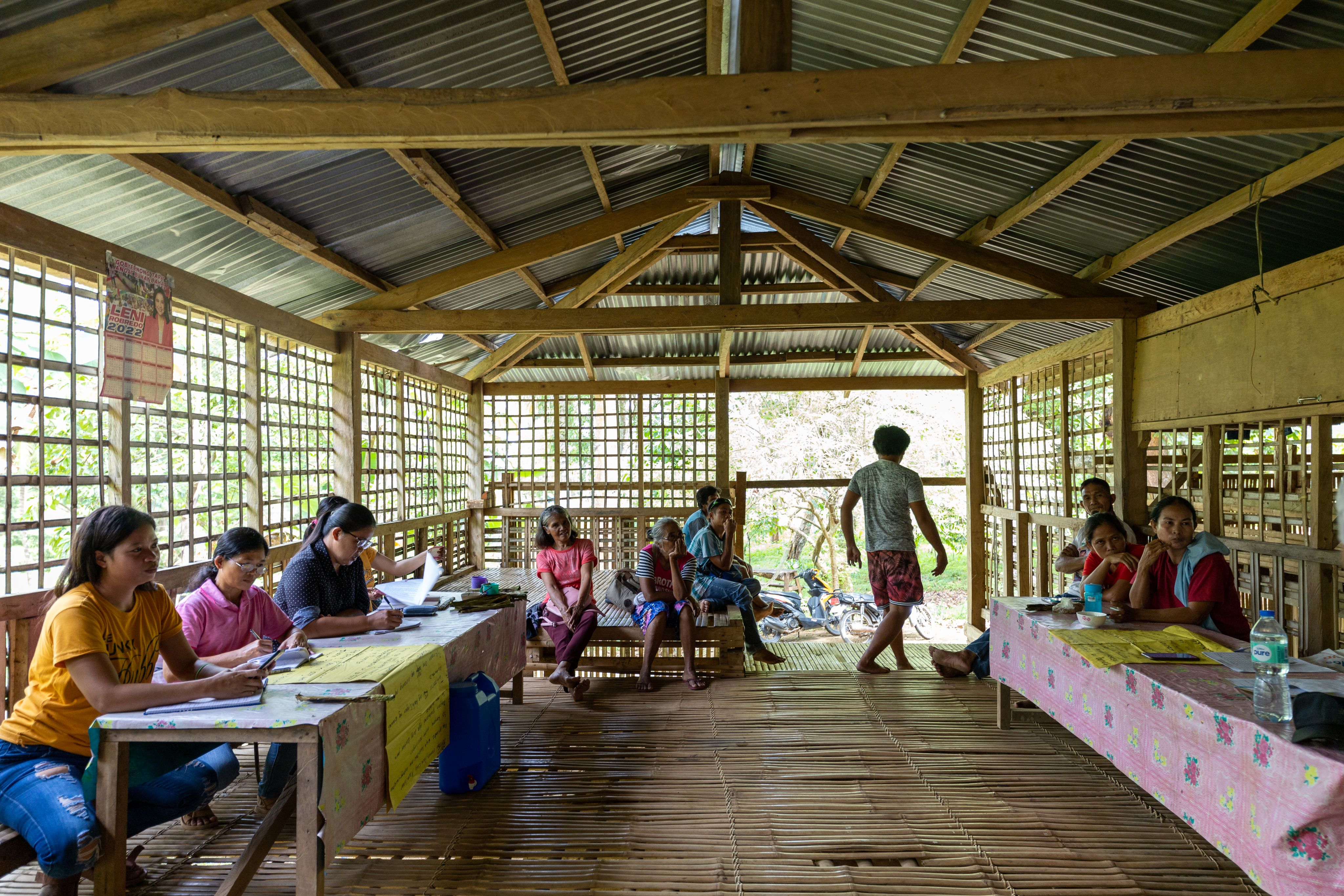
Indigenous peoples leaders quarterly meeting.
Indigenous peoples leaders quarterly meeting.
Velma Chollipas, who heads the IPDO accredited by the national authorities in Bataraza, in response to queries, said that related financial records are reviewed and verified by an independent auditor appointed for accuracy.
The local chieftain Dado Corio, who has faced accusations from his neighbours for the mismanagement of funds for years, says the irregularities in the distribution of the royalties should be on the IPDO, and that those who run the office are outsiders not from Palawan, and hence do not have the residents’ interests at heart.
The result is confusion, even as mining laws in the Philippines lay it down clearly that the rights of the Indigenous peoples or local communities need to be protected before any mining activity can go ahead.
For instance, it is decreed by law that mining firms interested in the exploration of a particular area will first need to hold a public hearing with affected communities, and approval is needed.
Even with a permit from the NCIP, environmental impact assessments and feasibility studies sometimes need to be conducted, before exclusive rights to conduct mining operations are granted.
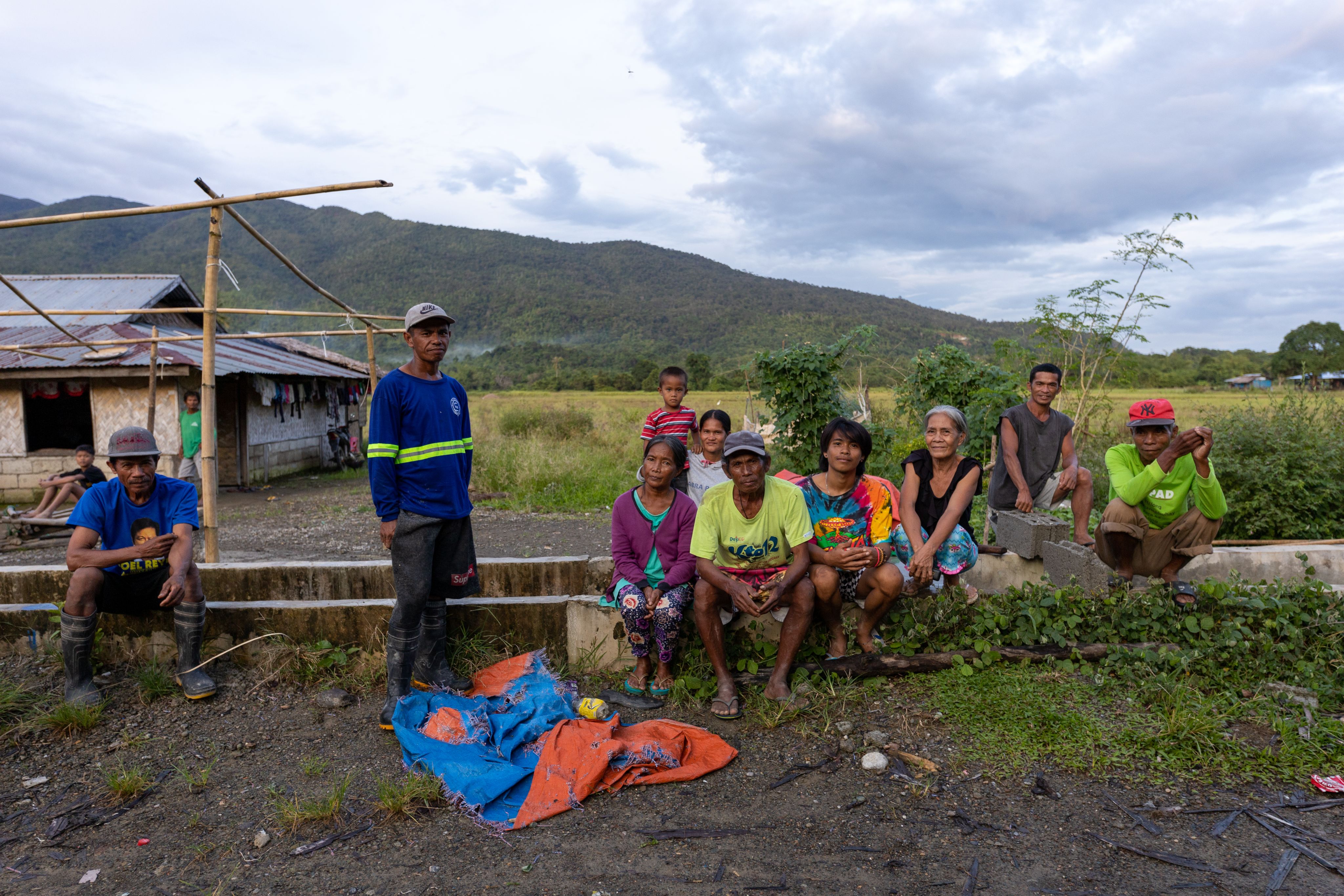
Jeminda Bartolome with her children and grandchildren near their rice fields at the foot of Mount Bulanjao.
Jeminda Bartolome with her children and grandchildren near their rice fields at the foot of Mount Bulanjao.
All we ask is for fairness. If they plan to expand, let’s divide the mountain. They can do their mining if they want, but leave us enough so that we get to keep our livelihood
Nevertheless, residents in the rice fields of Bataraza do not seem to be leading better lives. Bartolome has been staying in the same hut that she shares with her children and grandchildren for the past four decades, none of whom benefit from the promised scholarships from the mining firm.
Regardless, she said she does not really need the royalties or scholarships from RTMC.
“All we ask is for fairness. If they plan to expand, let’s divide the mountain. They can do their mining if they want, but leave us enough so that we get to keep our livelihood,” she said.
Brooke’s Point’s Tambiling is also resigned to the reality of mining operations in her town. Locals accept the money given by Ipilan Nickel as compensation, along with sacks of rice and seem generally happy with it. Like Bartolome, her wishes are simple:
“I understand that mining is good for the country. It will mean technology for less pollution and cleaner surroundings. But can the mining company take care of us too? I feel that they see us as insignificant.”
Additional reporting by Rhick Lars Albay and Robin Hicks. Basahin ang storya sa Tagalog.
At Brooke's Point, school children and their parents put up a performance of a traditional dance in celebration of Indigenous peoples month.
At Brooke's Point, school children and their parents put up a performance of a traditional dance in celebration of Indigenous peoples month.
